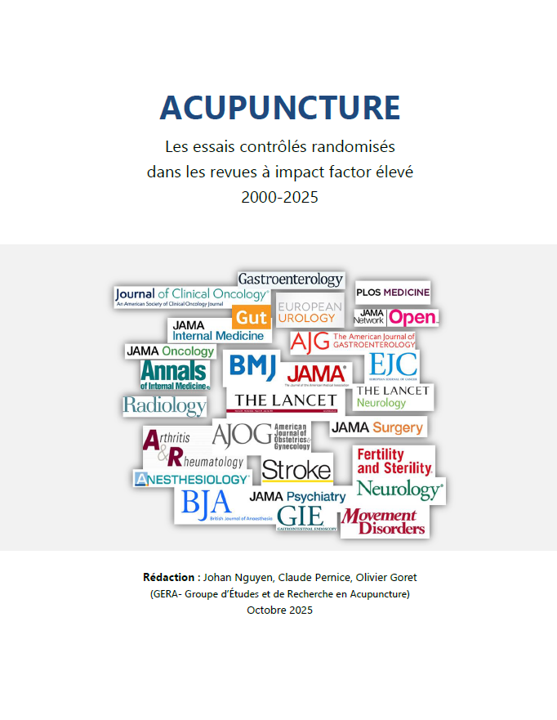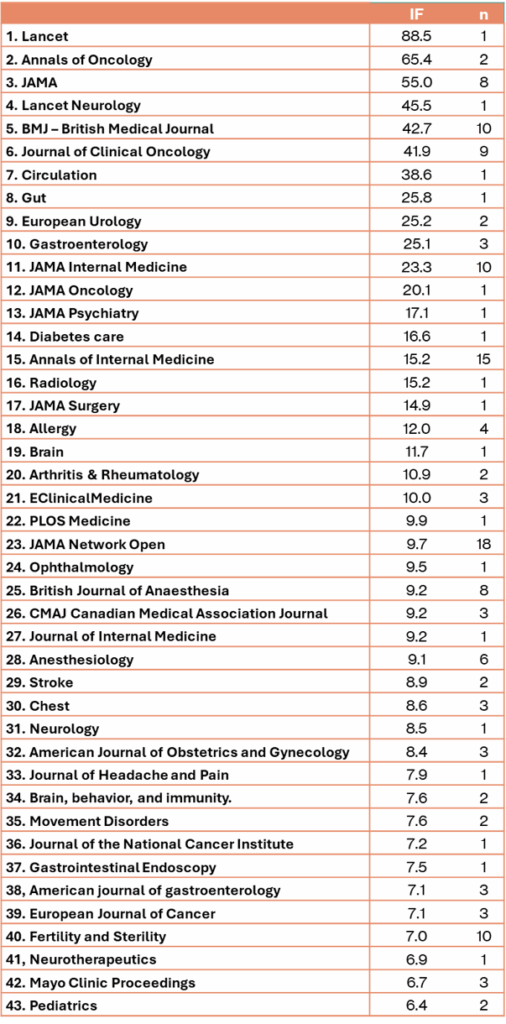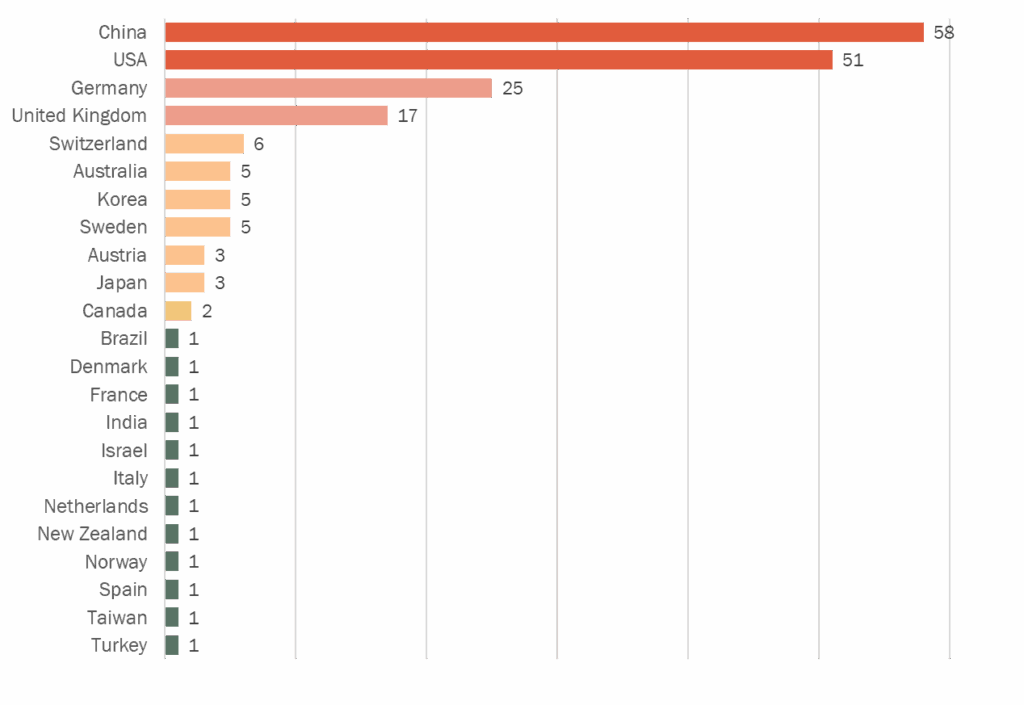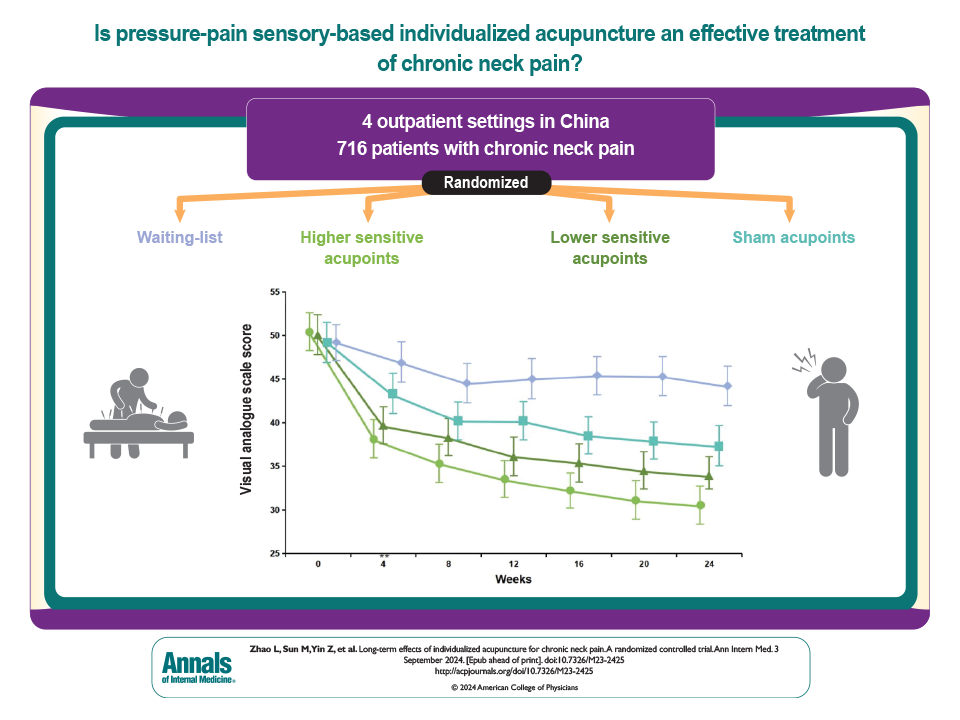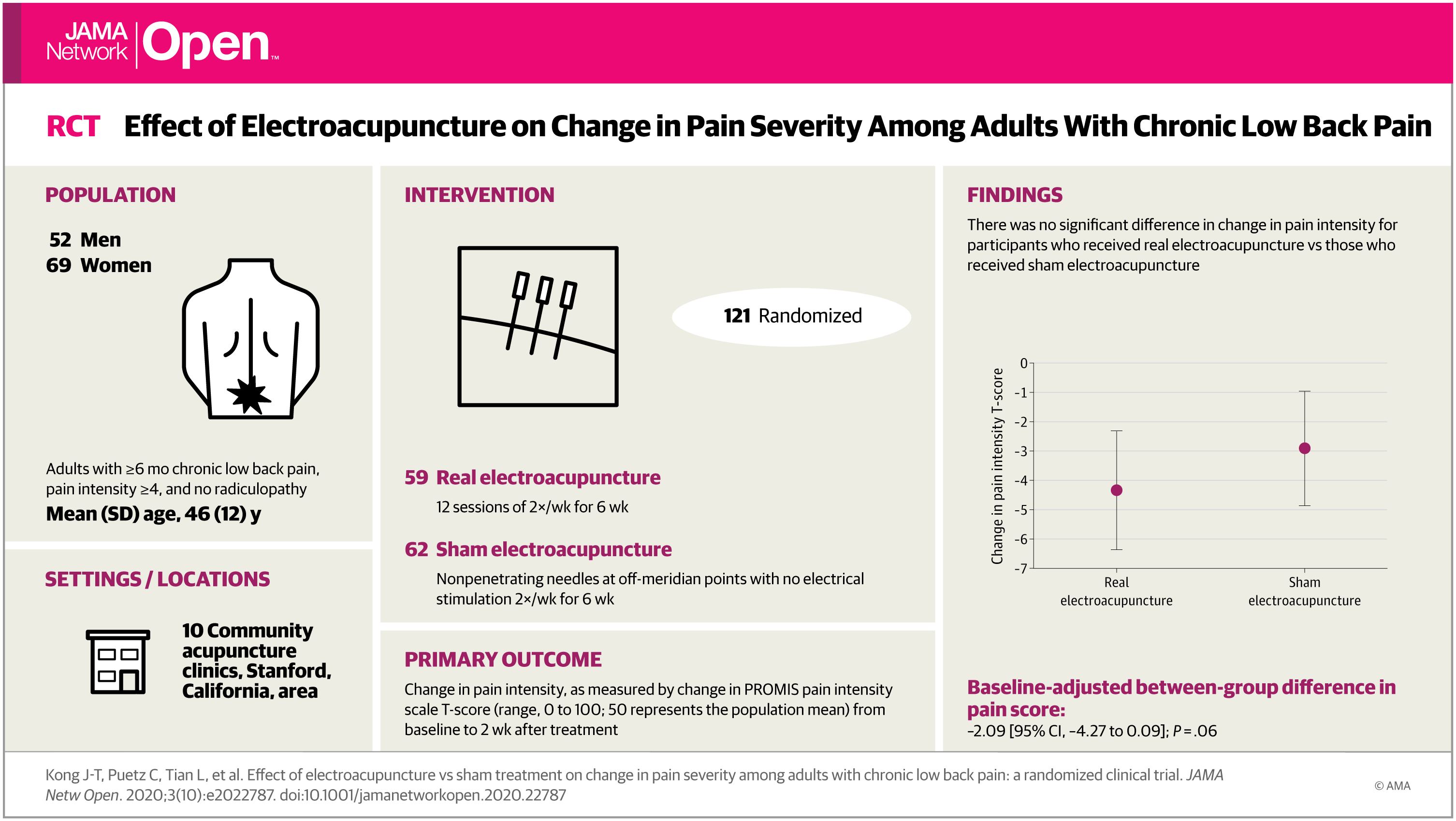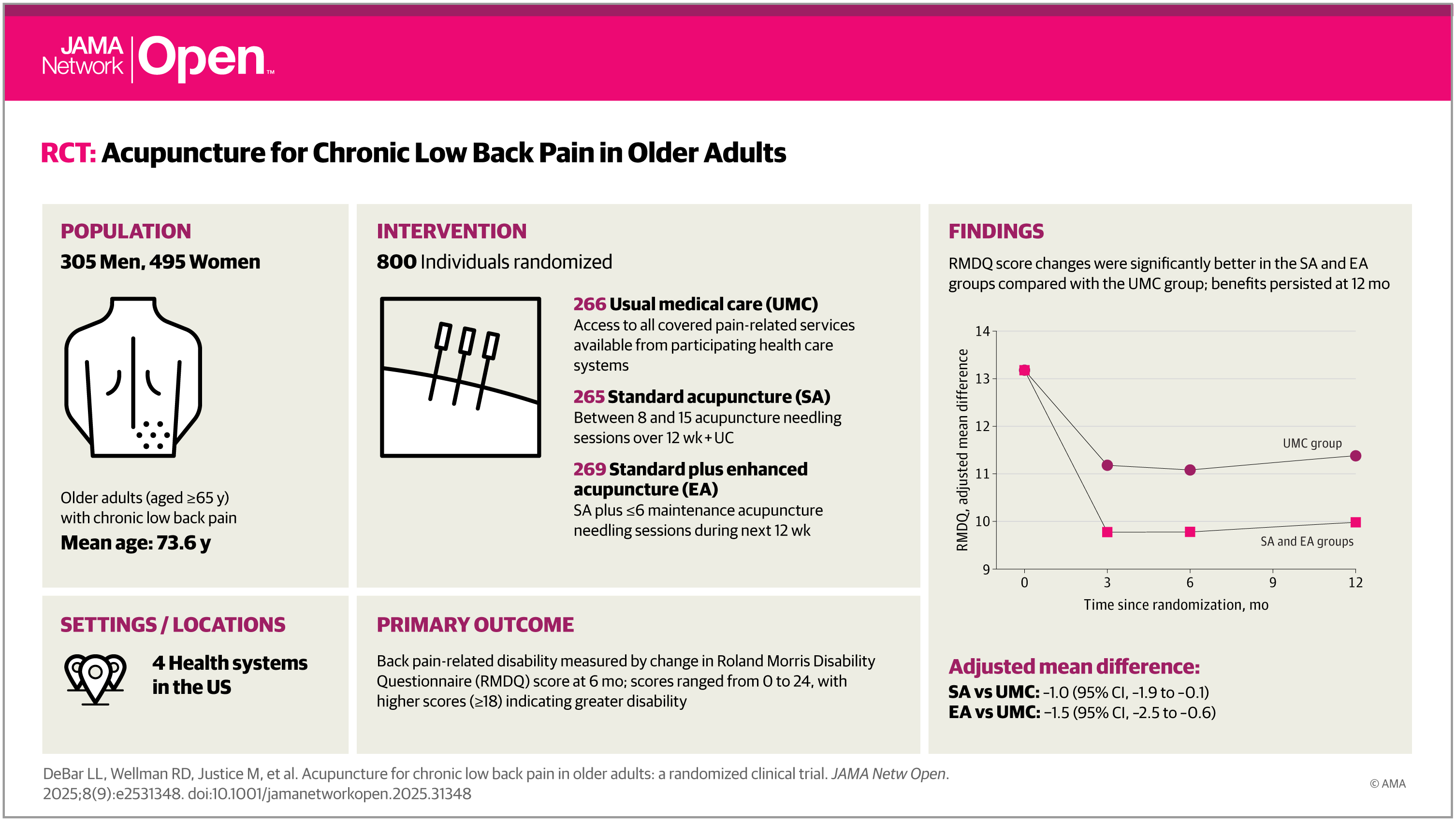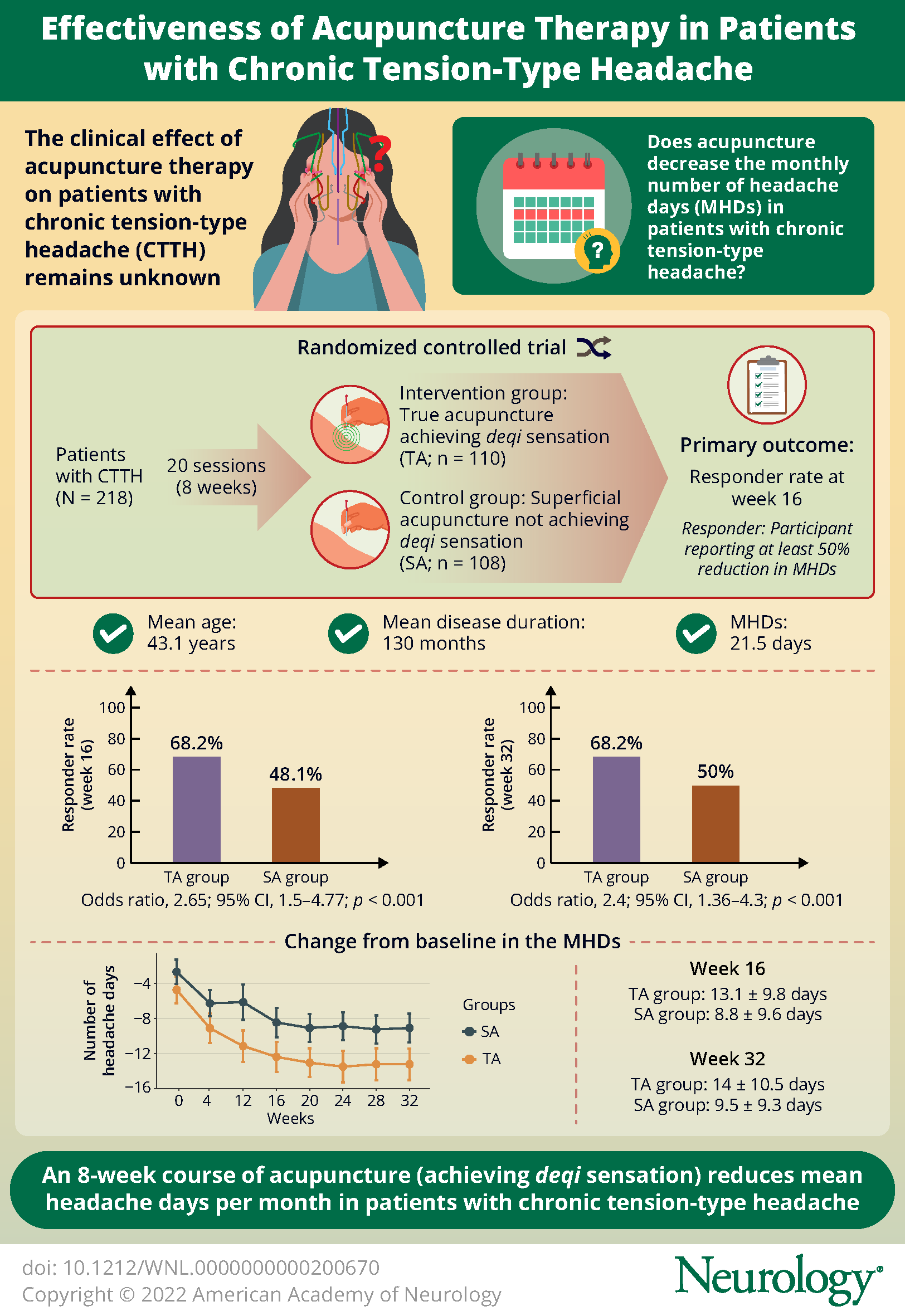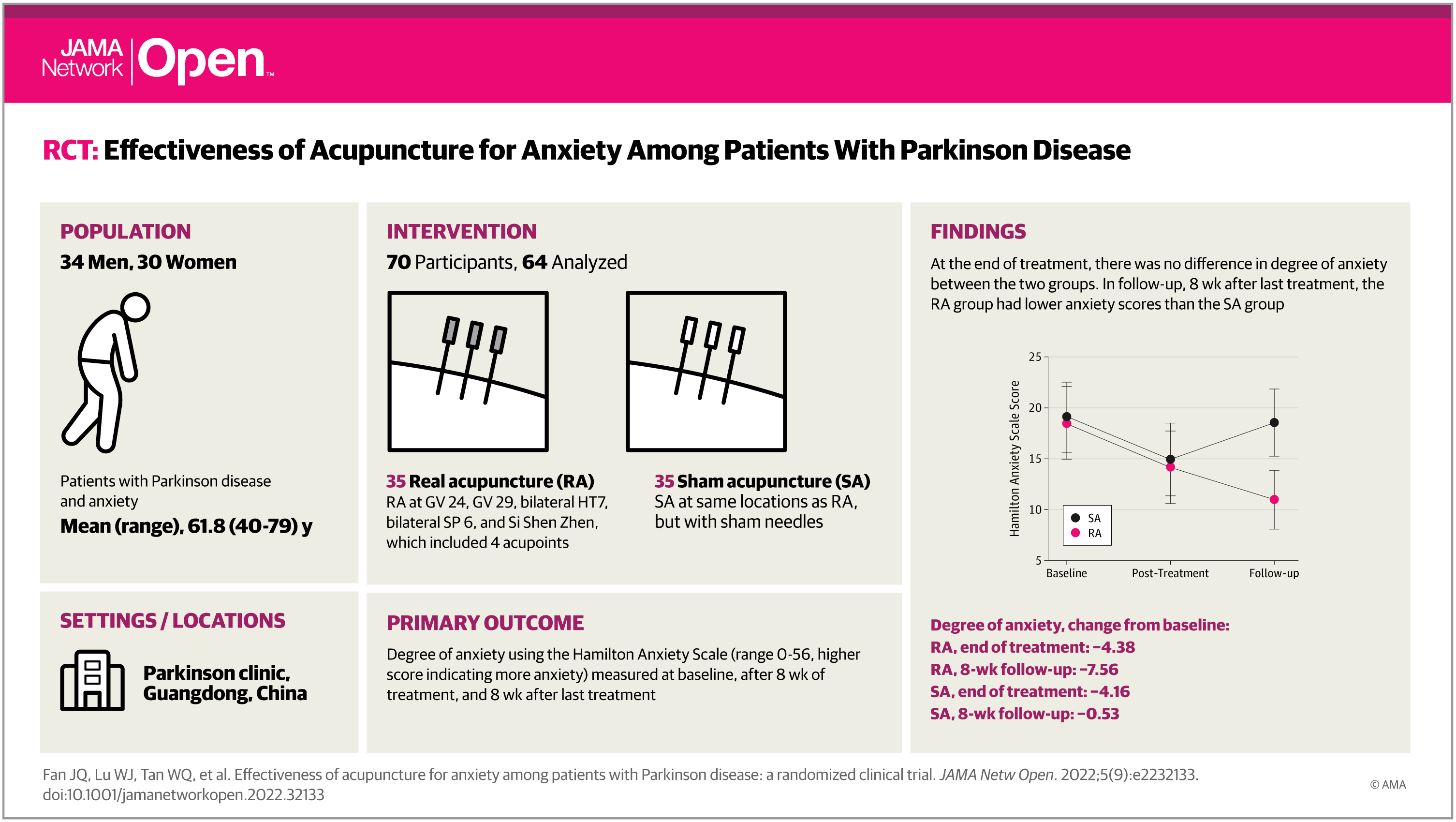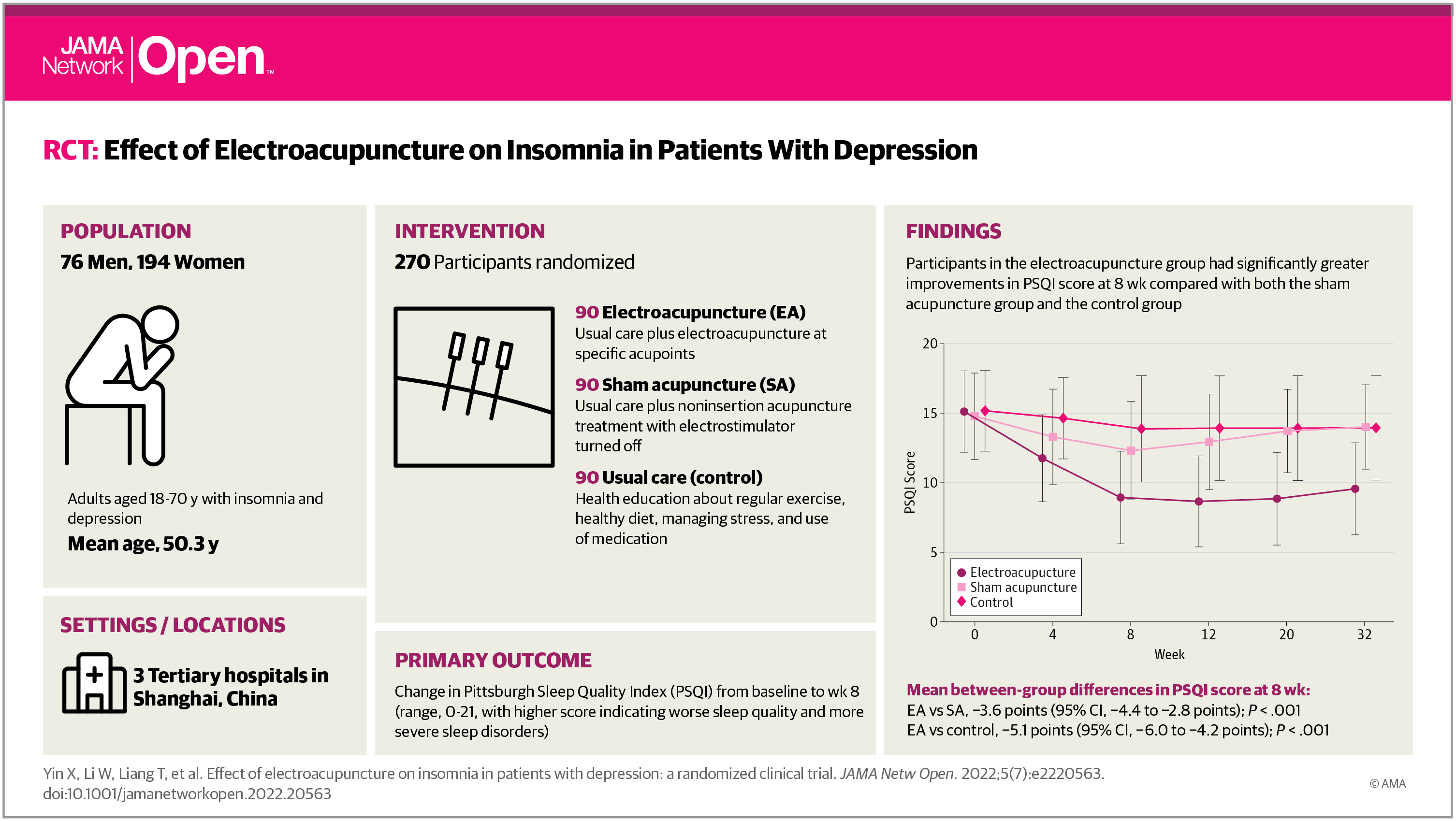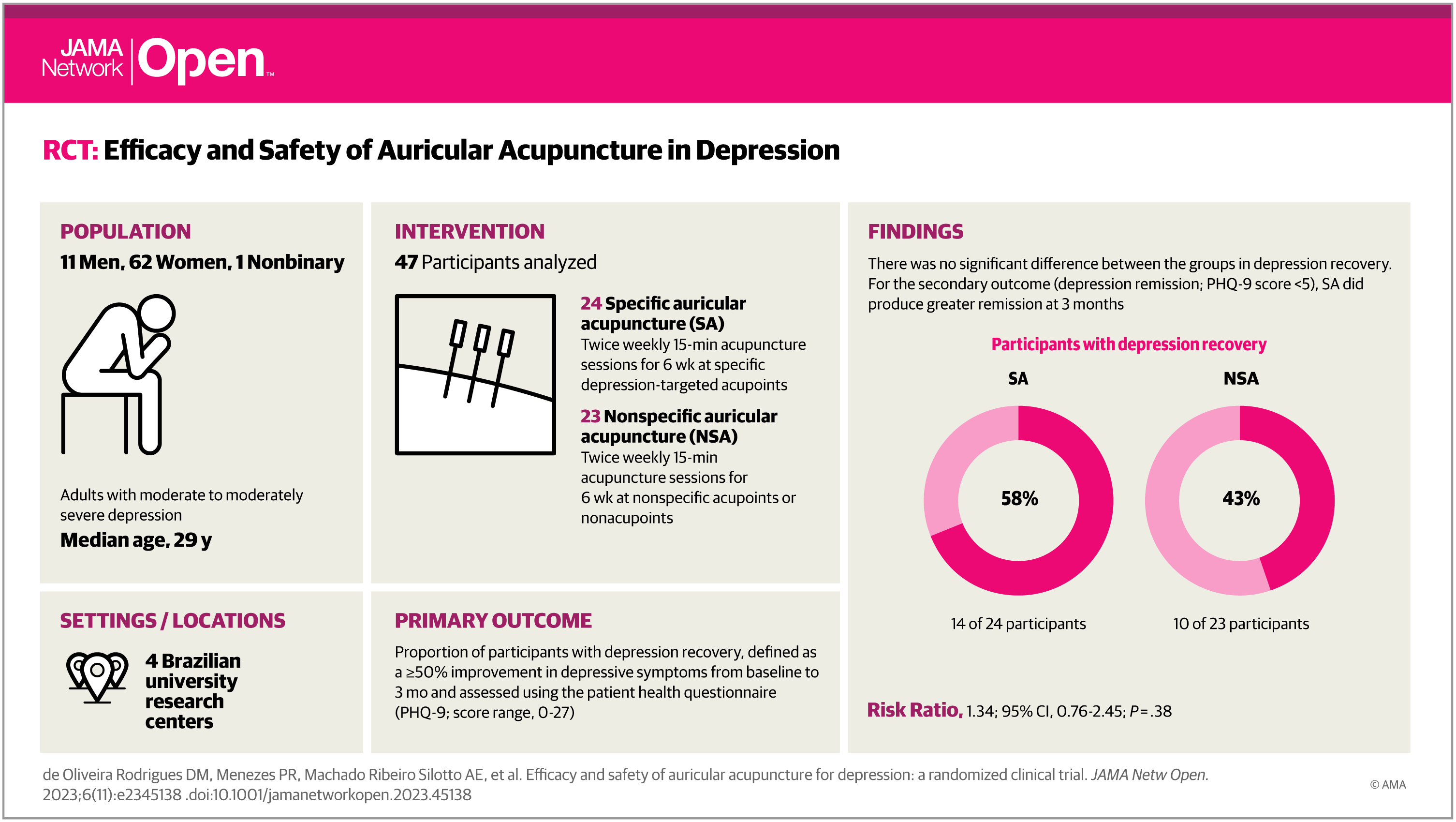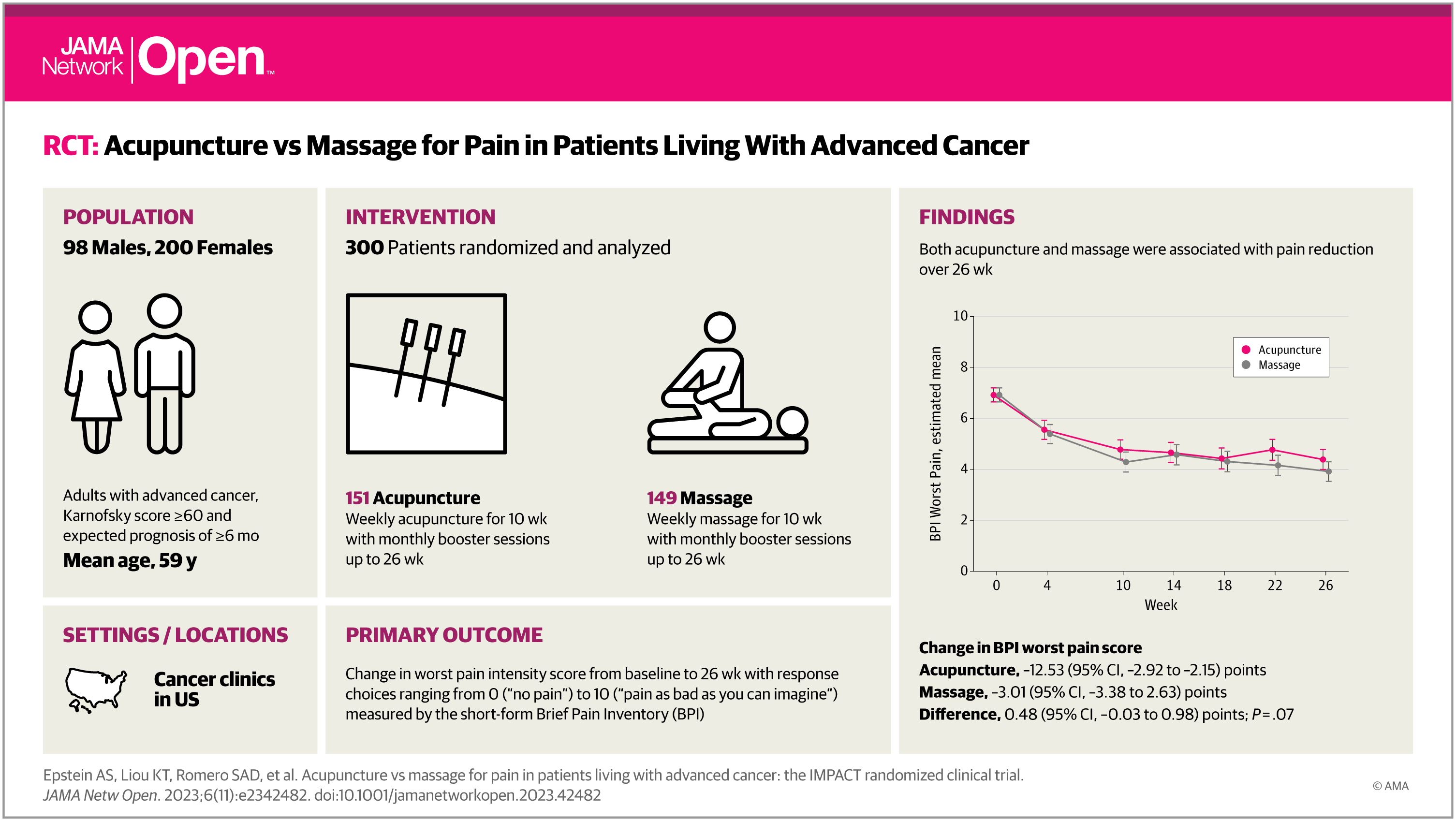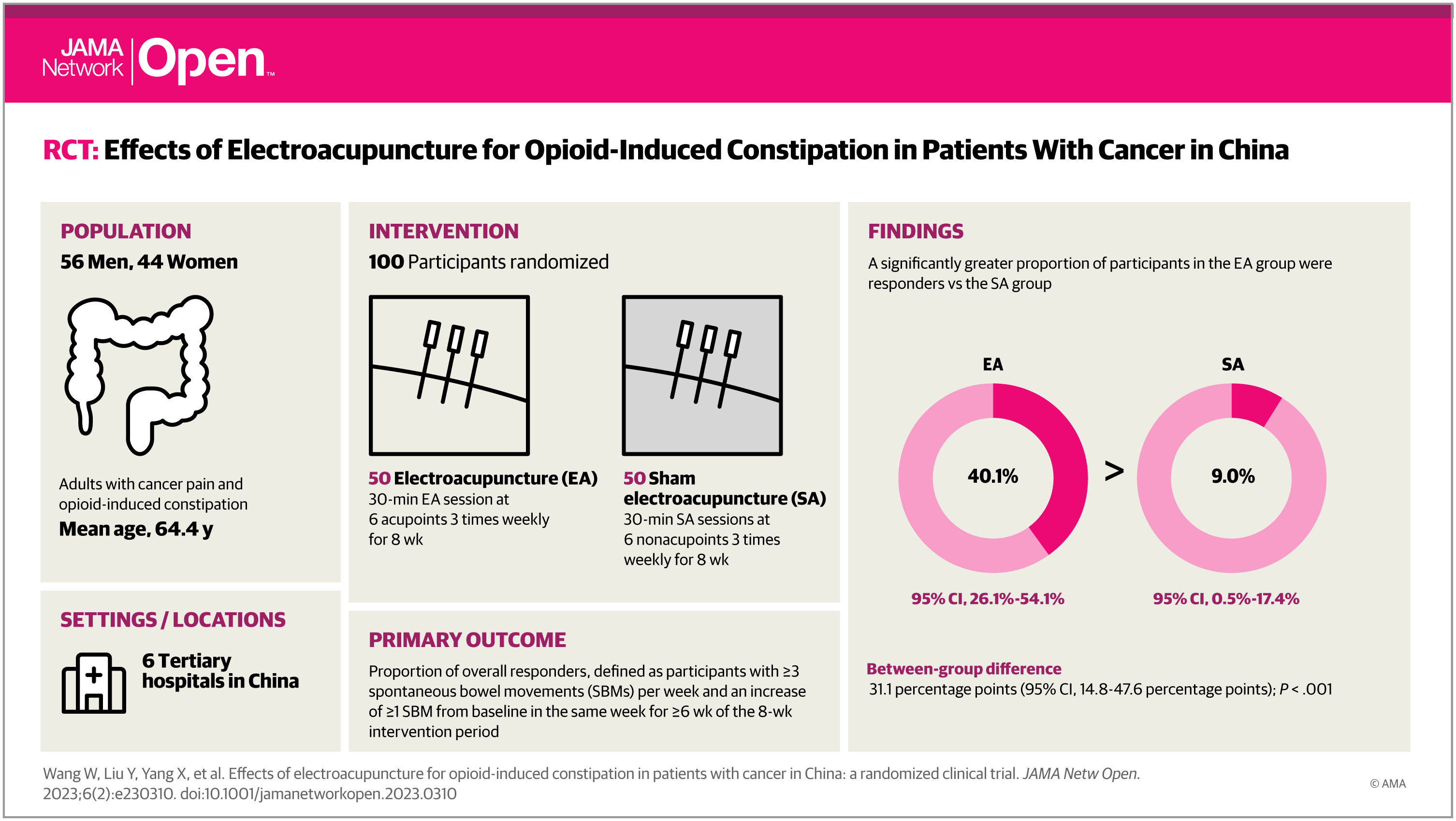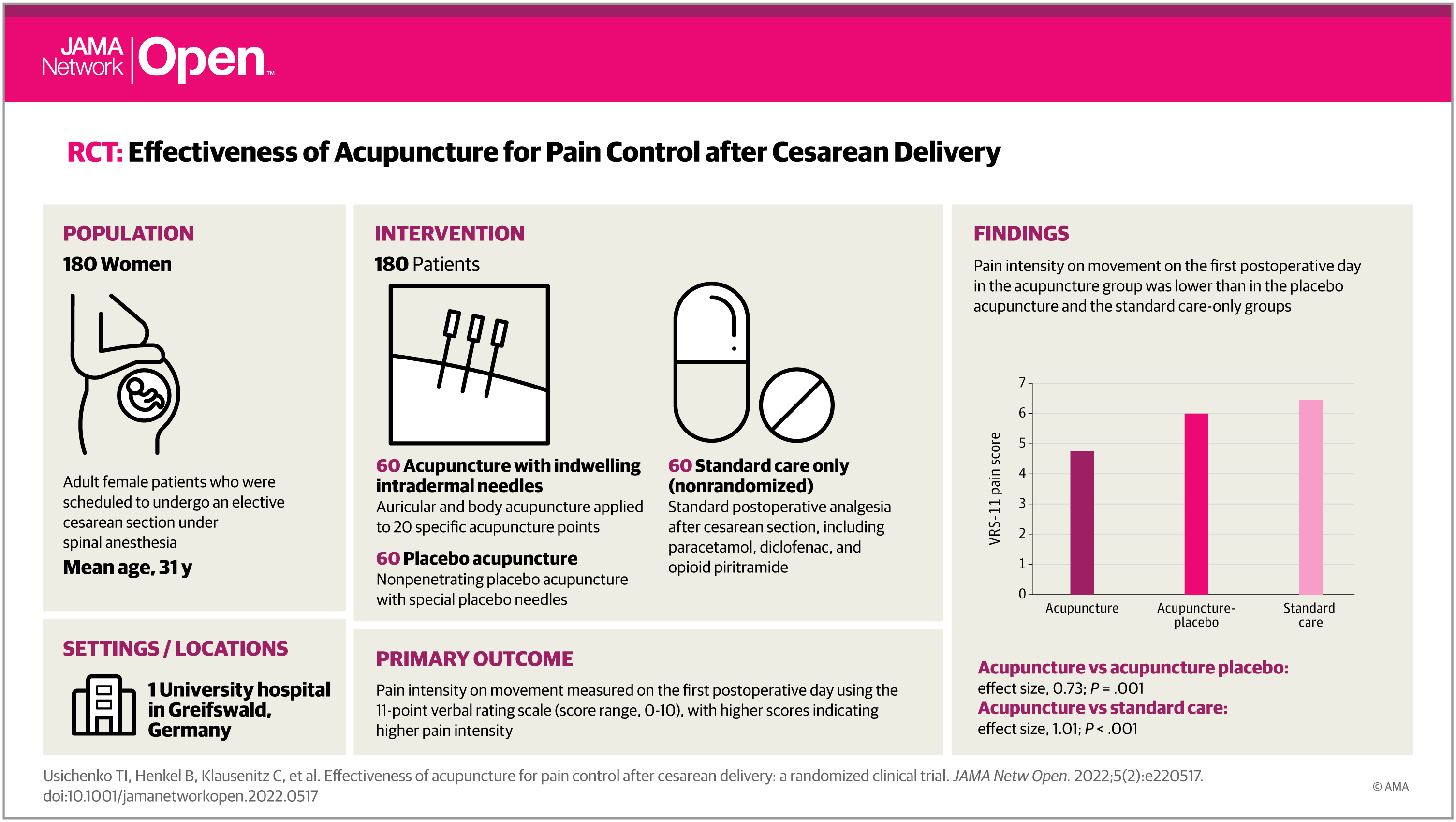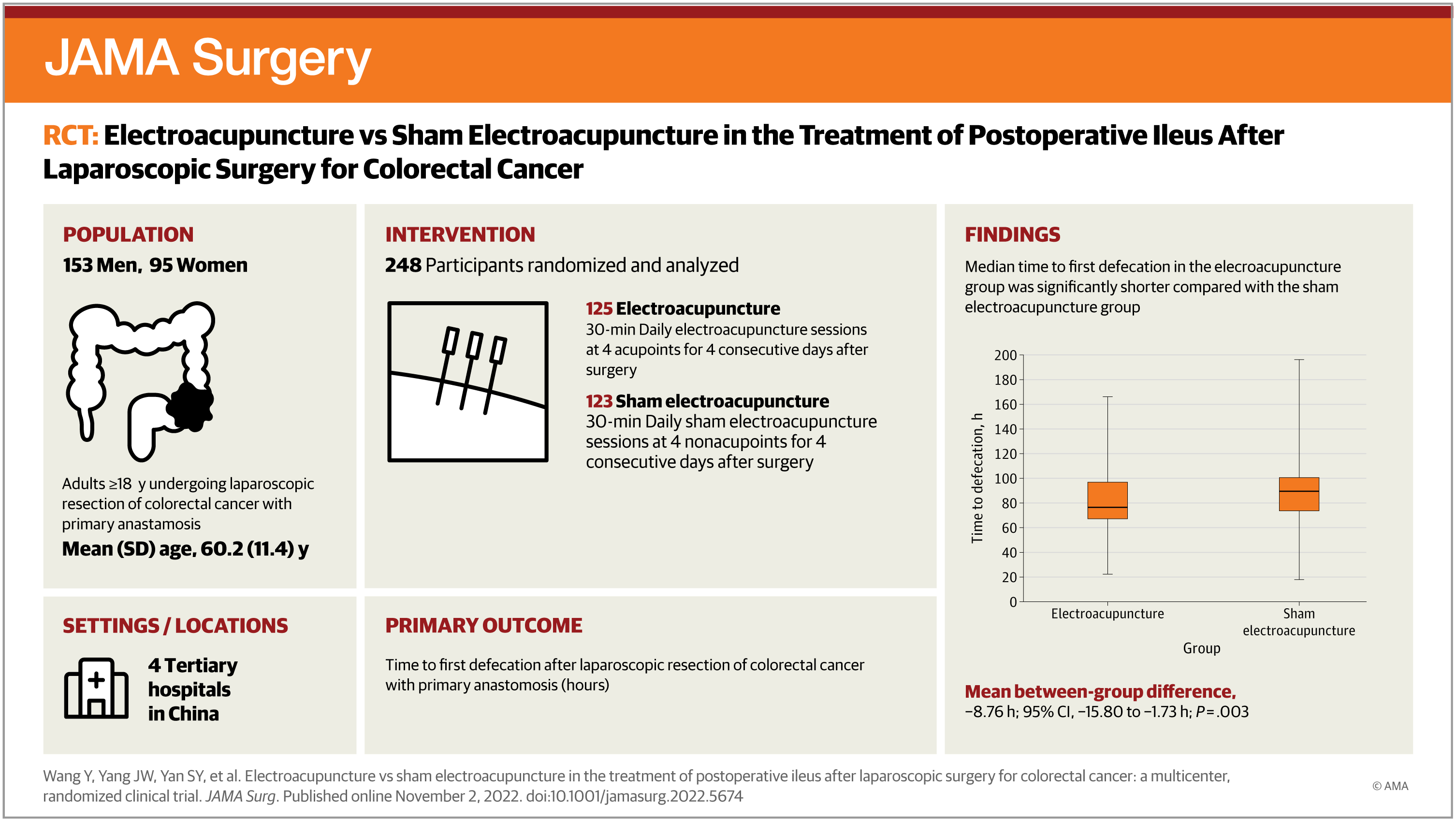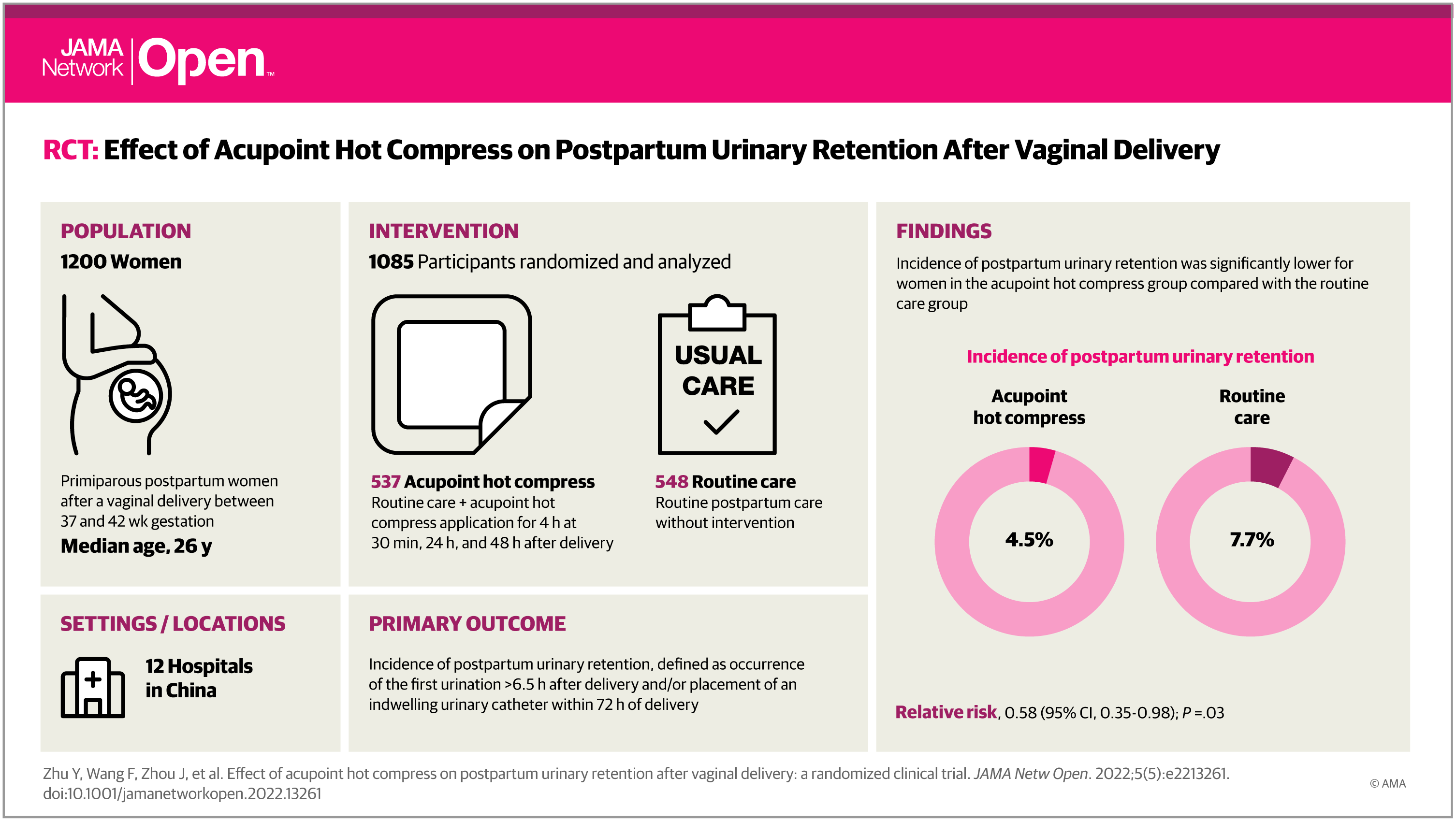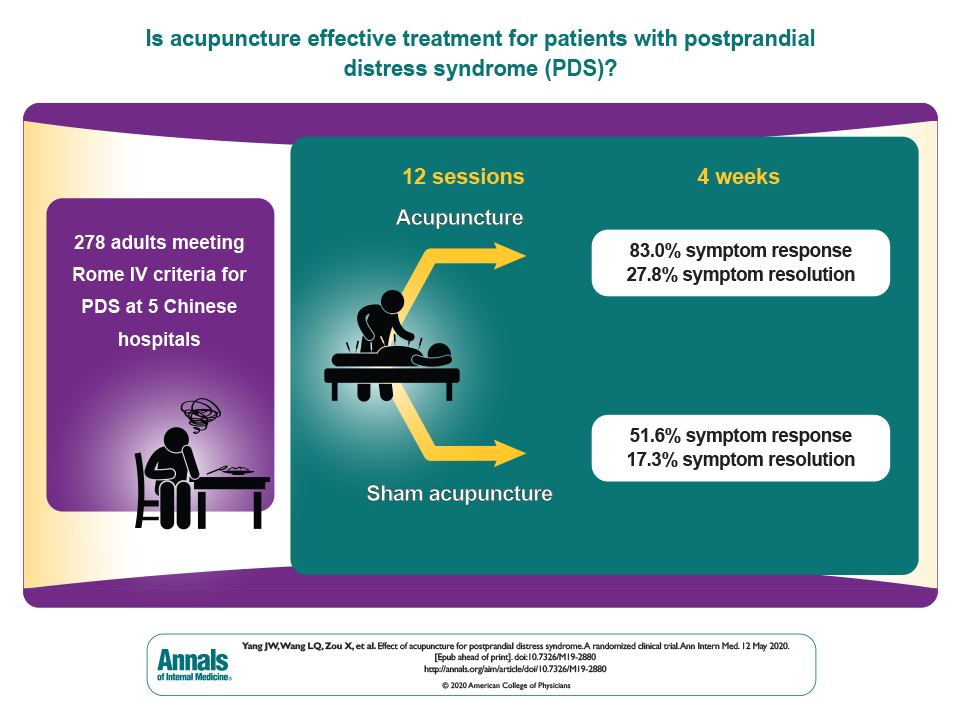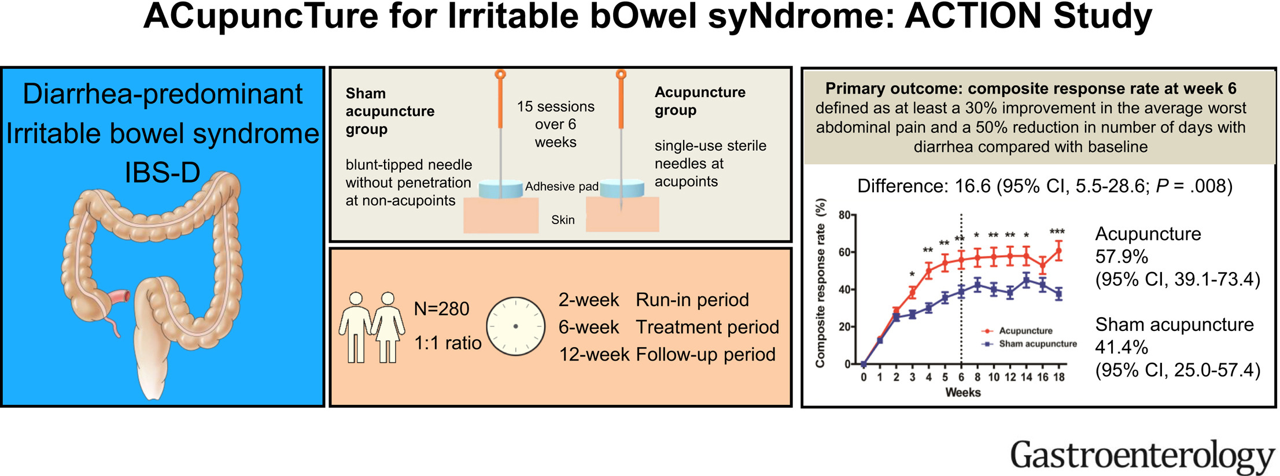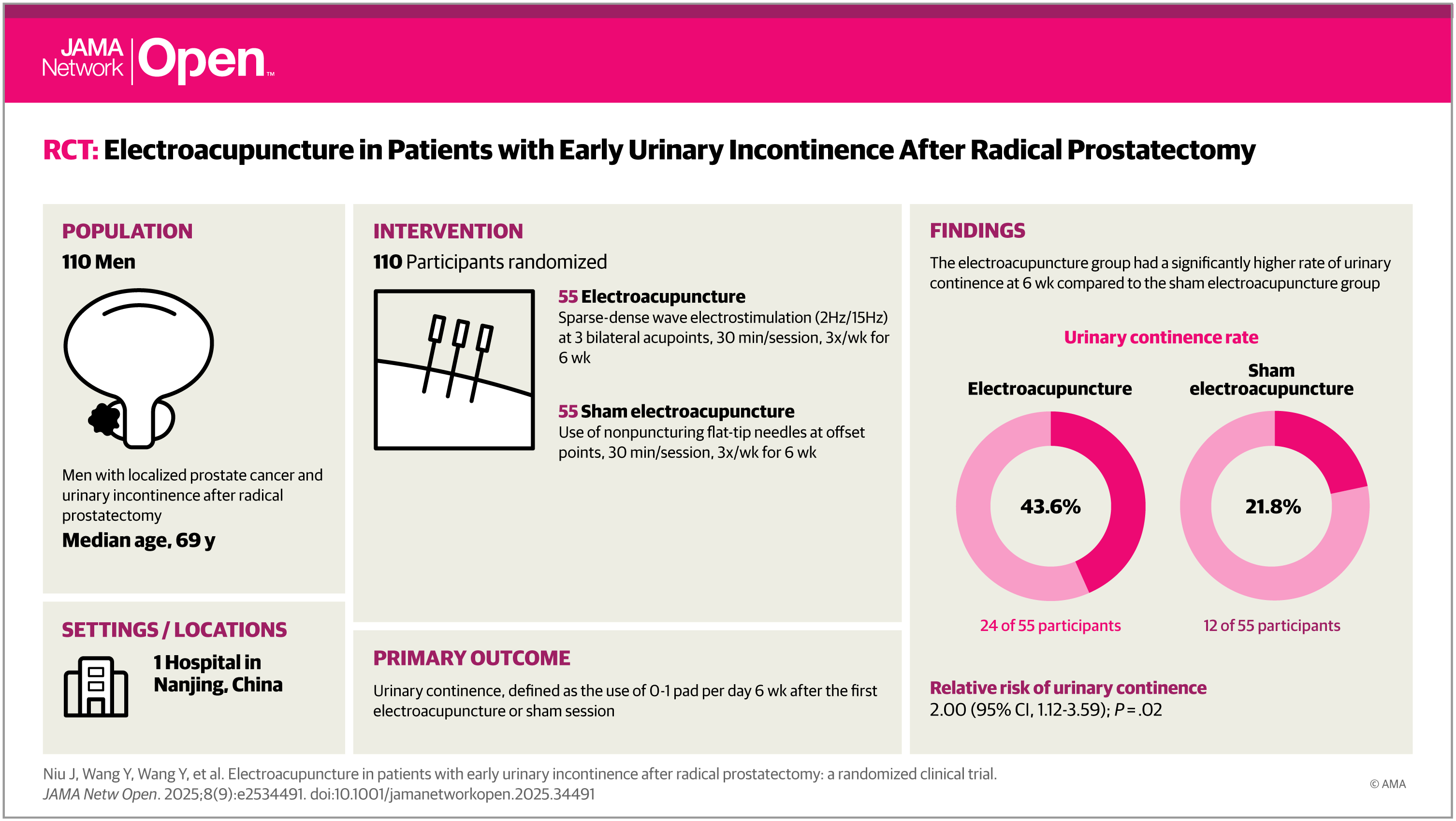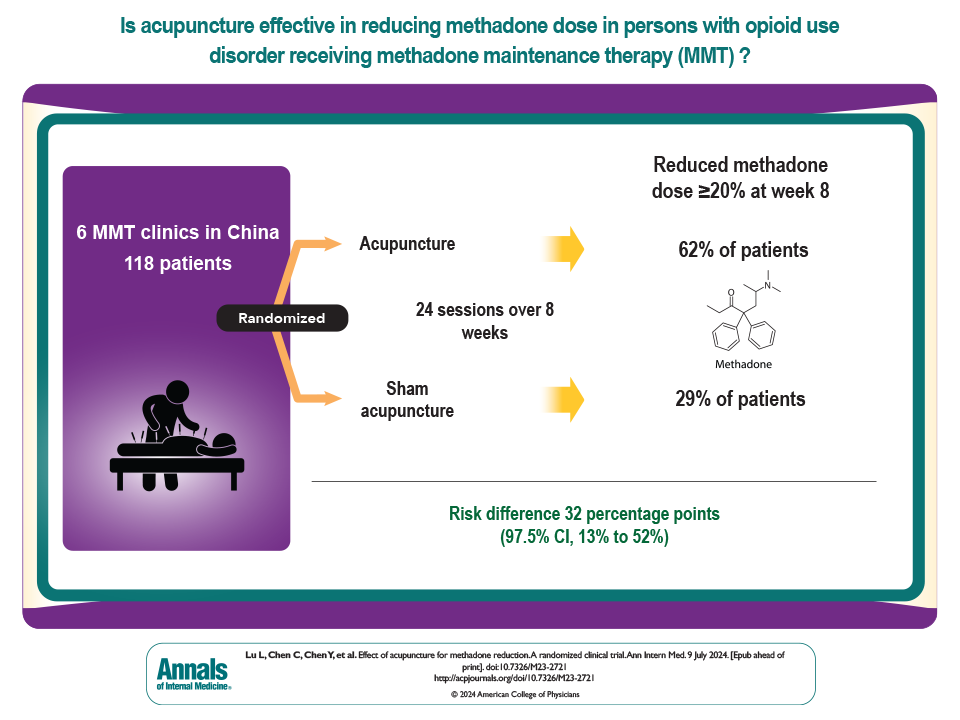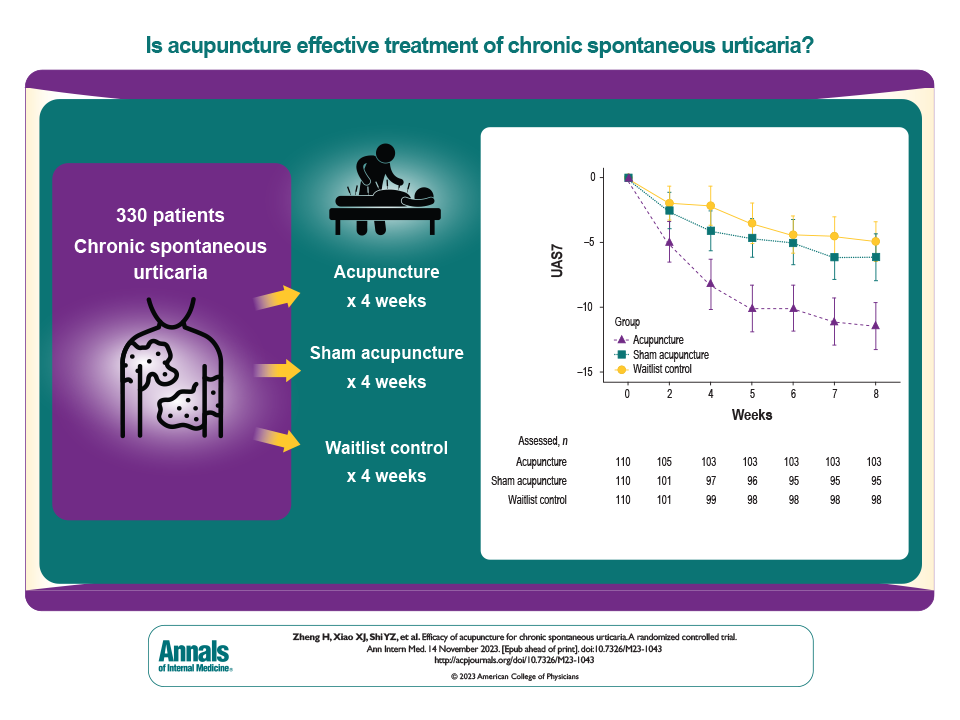
L’acupuncture est une discipline médicale thérapeutique fondée sur des données probantes et intégrée dans les cadres internationaux de la recherche. La publication d’essais contrôlés randomisés dans les revues médicales à facteur d’impact élevé en atteste la rigueur méthodologique et la crédibilité scientifique.
Le présent travail rassemble les études publiées entre 2000 et 2025 dans les revues à facteur d’impact supérieur à 6. Le corpus ainsi constitué offre une base accessible pour une approche de la réalité de la recherche clinique en acupuncture.
Introduction
Depuis les années 1990 la médecine s’est profondément transformée sous l’impulsion de la médecine fondée sur les preuves. L’introduction systématique des essais contrôlés randomisés, la hiérarchisation des niveaux de preuve et la généralisation des critères méthodologiques ont redéfini les contours de l’évaluation thérapeutique. Toute approche médicale s’inscrit désormais dans ce cadre.
L’acupuncture a rapidement répondu à ces exigences en développant une recherche particulièrement active : entre 1990 et 2025 plus de 6 200 essais contrôlés randomisés ont été indexés dans PubMed. Le nombre moyen d'études annuelles est passée de 24 dans les années 1990 à 144 dans les années 2000 pour se stabiliser autour de 300 depuis 2010 (fig. 1). L’évolution de cette production traduit un champ scientifique dynamique, nourri par la diversité des questions cliniques explorées et par une solide communauté de recherche à l’échelle internationale.
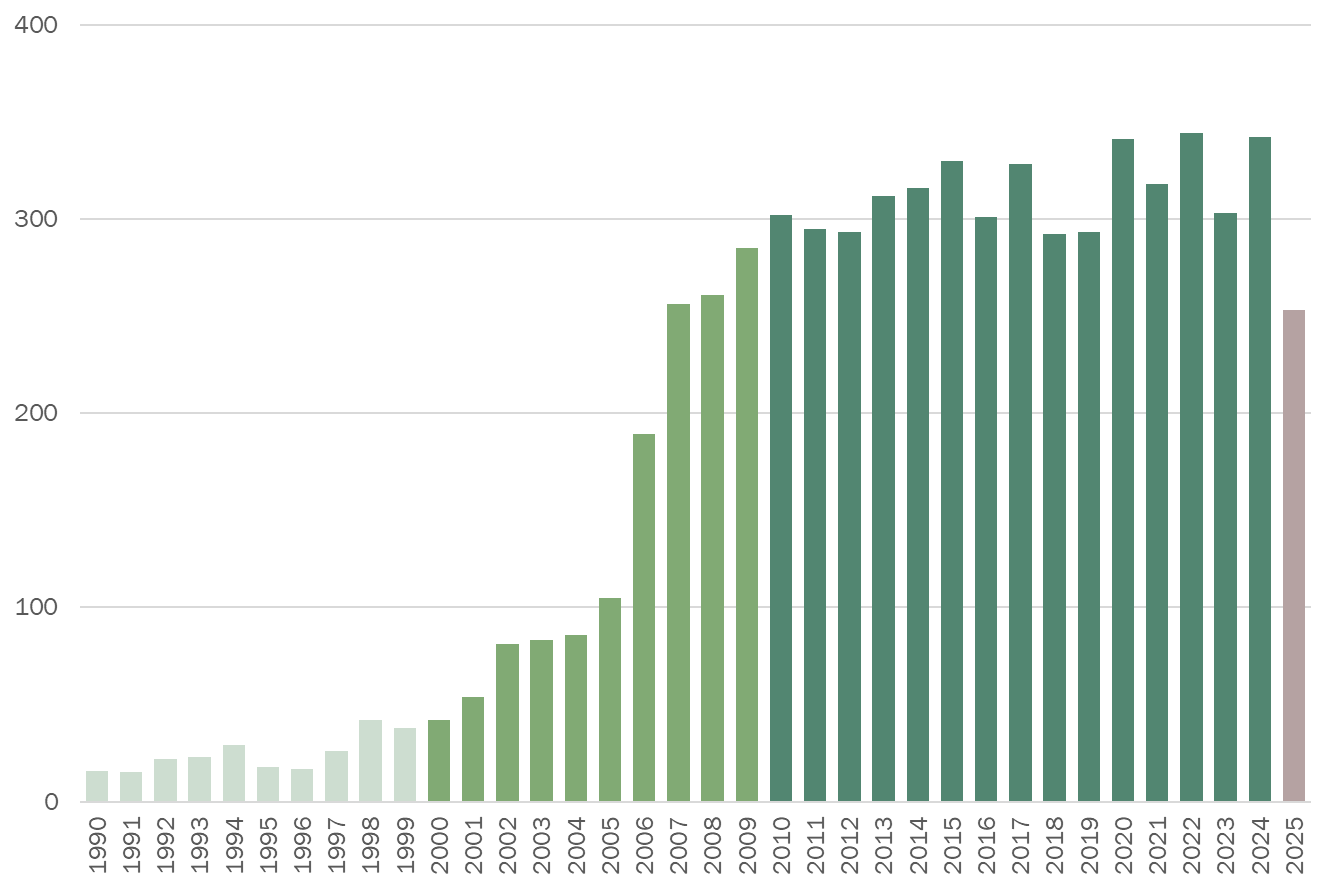
Figure 1. Évolution du nombre d’essais contrôlés randomisés (ECR) sur l’acupuncture indexés dans PubMed entre 1990 et 2025.
Dans le domaine de l’acupuncture la question n’est donc pas la rareté des études mais au contraire leur abondance. Ce constat s’inscrit dans une évolution plus générale de la recherche médicale, marquée par une multiplication des essais cliniques, souvent de qualité discutable, rendant la synthèse des résultats plus complexe. C’est habituellement le rôle des revues systématiques de mettre en cohérence cette production, pathologie par pathologie, en apportant une évaluation critique et cumulative des essais disponibles.
Notre objectif ici est différent : proposer un point de vue complémentaire fondé sur les études primaires en recensant les essais publiés dans des revues répondant aux exigences éditoriales et scientifiques les plus élevées — et reconnues comme telles dans la communauté médicale. Cette démarche vise à objectiver la recherche clinique en acupuncture telle qu’elle s’exprime dans les revues de référence et à constituer un corpus cohérent apte à une analyse structurée. Elle offre une manière renouvelée d’aborder la question de la qualité des études en s’appuyant sur les travaux qui, a priori, répondent aux standards méthodologiques les plus rigoureux. Ce corpus pourra servir de base pour examiner les problématiques de la recherche en acupuncture, sa diversité disciplinaire et les résultats cliniques rapportés. Il présente un intérêt scientifique, pédagogique et institutionnel.
L’Impact Factor
Qu’est-ce que l’Impact Factor ?
L’Impact Factor (IF) constitue un indicateur bibliométrique destiné à quantifier la visibilité d’une revue scientifique. Il correspond au nombre moyen de citations reçues, sur une période de deux ans, par les articles publiés dans cette revue. Il permet d'identifier les revues de référence dont les publications exercent une forte influence sur les orientations de la recherche et les pratiques cliniques en raison de leurs critères éditoriaux et méthodologiques exigeants.
Ce que l’Impact Factor ne permet pas de dire
L’Impact Factor (IF) ne permet pas d’inférer la qualité d’un article. Un essai discutable peut être publié dans une revue très citée ; inversement, une étude exemplaire peut paraître dans une revue à faible IF. Son usage comme critère d’évaluation des chercheurs a d’ailleurs été critiqué par la Déclaration de San Francisco (DORA) qui recommande de juger les travaux sur leur contenu plutôt que sur le prestige de la revue. Inversement une étude de mauvaise qualité a certainement moins de chance d'être publiée dans une revue à IF élevé qu'à IF faible.
De même, la publication d’une étude dans une revue à fort Impact Factor ne suffit évidement pas à établir l’efficacité ou l’inefficacité d’un traitement. L’évaluation des preuves repose sur une analyse critique de l’ensemble des études dans le cadre d’une revue systématique puis sur l’élaboration de recommandations de bonnes pratiques qui valident et hiérarchisent les données disponibles pour guider la décision clinique.
Les limites et les dérives possibles
L’Impact Factor varie selon les contextes disciplinaires : les revues de biologie fondamentale ou d’oncologie atteignent naturellement des valeurs plus élevées que celles des disciplines cliniques, où les volumes de publication et de citation sont moindres.
Il peut aussi être influencé par des stratégies éditoriales visant à accroître artificiellement la visibilité telles que les auto-citations ou la sélection de thématiques fortement citées. Cette manipulation peut être le fait de revues dites "prédatrices", publiant sans aucune relecture ni contrôle de qualité scientifique, dans un pur objectif financier, posant un grave problème de crédibilité et d’intégrité scientifique.
L'acupuncture dans les revues à impact factor élevé
Nous avons effectué une recherche bibliographique afin d’identifier les essais cliniques randomisés publiés de 2000 à 2025 dans les revues dont le facteur d’impact 2025 est supérieur à 6. Ce seuil, déjà retenu dans une publication antérieure [1], correspond approximativement à la tranche supérieure — de l’ordre de 5 % — des revues les plus influentes de la littérature biomédicale internationale.
L’Impact Factor d’une revue variant d’une année à l’autre, nous avons retenu celui de 2025 comme référence unique. L’objectif n’était pas de mesurer une évolution mais de constituer un corpus d’études publiées dans des revues actuellement reconnues pour la rigueur de leurs standards méthodologiques et scientifiques.
Ont été inclus tous les essais contrôlés randomisés dont l’objectif principal était d’évaluer l’efficacité clinique de l’acupuncture et exclus les travaux expérimentaux menés sur sujets sains. Par « acupuncture », nous avons retenu la définition du Collège français d’acupuncture et de médecine chinoise : l’ensemble des modalités de stimulation physiques ou physicochimiques de points d’acupuncture à visée thérapeutique.
Un corpus de 154 publications a ainsi été constitué.
Les revues
Ces 154 essais contrôlés randomisés ont été publiés dans 43 revues dont le facteur d’impact 2025 est supérieur à 6 (fig. 2). Parmi elles figurent plusieurs titres parmi les plus prestigieux de la littérature biomédicale internationale.
Aucune de ces revues ne figure parmi les revues prédatrices répertoriées et toutes apparaissent dans la liste positive publiée par la Conférence des doyens de médecine et du CNU Santé (mise à jour du 2 octobre 2025). Ce constat renforce la pertinence du seuil d’IF > 6 retenu pour définir le périmètre de notre étude.
Figure 2. Revues à impact factor > 6 ayant publié au moins un ECR sur l’acupuncture (2000–2025). Les revues sont classées par ordre d’impact factor (IF) avec mention du nombre d’ECR publiés (n).
L'origine et les auteurs des essais
Les signataires sont issus de vingt-trois pays (fig. 3). La recherche est largement dominée par la Chine et les États-Unis, dont le nombre d’essais est relativement équivalent (58 et 51) — fait notable dans le domaine de l’acupuncture. Les essais réalisés en Chine représentent environ 38 % du total et la majorité des études provient ainsi de pays occidentaux traduisant une large internationalisation de la recherche en acupuncture.
Le duopole Chine–États-Unis observé dans la recherche sur l’acupuncture est, en fait, similaire à celui que l’on retrouve dans la recherche clinique pharmacologique. En 2024, la Chine a dépassé les États-Unis par le nombre d’essais cliniques enregistrés portant sur des médicaments : 7 100 contre 6 000 (ITIF 2025). Dans l’analyse critique des essais chinois en acupuncture, il convient donc de garder à l’esprit la place prépondérante qu’occupe la Chine dans la recherche thérapeutique mondiale.
Champ des indications
Le corpus des essais contrôlés randomisés publiés dans des revues de référence offre un échantillon représentatif de la recherche actuelle sur l’acupuncture. Il permet de dresser une cartographie raisonnée des indications thérapeutiques explorées dans les principales disciplines médicales. Cette répartition témoigne de l’ampleur et de la diversité des domaines concernés, illustrant la place de l’acupuncture comme discipline thérapeutique transversale.
| Rhumatologie (n=29) | Fibromyalgie Syndrome du canal carpien Cervicalgie chronique Lombalgie Canal lombaire étroit Lombalgies après chirurgie du rachis Sciatique par hernie discale Douleur chronique du genou Gonarthrose Arthrose de genou et de hanche |
| Neurologie-Psychiatrie (n=27) | Céphalée chronique Migraine Céphalées de tension Séquelles de traumatisme crânien Accident vasculaire cérébral Aphasie post-AVC Maladie de Parkinson Neuropathie diabétique Dépression Stress post-traumatique |
| Oncologie (n=25) | Douleur chez le patient cancéreux Arthralgies liées aux anti-aromatases Bouffées de chaleur dans le cancer du sein Bouffées de chaleur dans le cancer de la prostate Nausées et vomissements chimio-induits Neuropathie périphérique chimio-induite Xérostomie radio-induite Constipation sous opioïdes Fatigue liée au cancer Dyspnée dans les cancers pulmonaires avancés Troubles cognitifs chez le patient cancéreux |
| Médecine périopératoire (n=18) | Anxiété périopératoire Anesthésie de la chirurgie des sinus Nausées et vomissements postopératoires Douleurs postopératoires Iléus postopératoire Hypotension après rachianesthésie |
| Gynécologie-Obstétrique (n=15) | Dysménorrhée Endométriose Syndrome de l’ovaire polykystique Bouffées de chaleur de la ménopause Fécondation in vitro Nausées et vomissements gravidiques Douleurs lombo-pelviennes de la femme enceinte Rétention urinaire du post-partum |
| Gastro-entérologie (n=10) | Dyspepsie fonctionnelle Syndrome du côlon irritable Maladie de Crohn Constipation chronique Sédation dans les échographies endoscopiques |
| Urologie et andrologie (n=7) | Colique néphrétique Incontinence urinaire féminine Incontinence urinaire post-prostatectomie Prostatite chronique / syndrome douloureux pelvien Oligoasthénozoospermie Éjaculation prématurée |
| Addictologie (n=5) | Sevrage tabagique Dépendance à la cocaïne Dépendance aux opioïdes Sevrage néonatal |
| ORL (n=4) | Rhinite allergique |
| Dermatologie (n=3) | Dermatite atopique Urticaire chronique |
| Pneumologie (n=3) | Bronchopneumopathie obstructive chronique Asthme |
| Cardiologie (n=2) | Angor stable Hypertension |
| Ophtalmologie (n=1) | Amblyopie anisométropique |
Résultats des essais
Sur les 154 essais cliniques randomisés recensés, 119 (77,3%) concluent à un effet positif de l’acupuncture (signalés ✅ dans la liste) et 35 (22,7%) à une absence d’efficacité démontrée (signalés ❌). Ce résultat est déterminé sur le critère principal de jugement défini dans l'étude et fondé sur la signification statistique (valeur de p). Lorsqu’un essai comporte plusieurs comparaisons la comparaison versus fausse acupuncture a été retenue.
La proportion d’essais à résultats positifs observée (77,3 %) s’inscrit dans un ordre de grandeur identique à celui rapporté dans d’autres disciplines par exemple en gynécologie oncologique (Levin G et al., 2024 [2]) , anesthésiologie (De Oliveira GS et al., 2012 [3]) ou gastroentérologie (Meyer C et al., 2018 [4]) et particulièrement dans les revues à haut impact factor. Si un biais de publication peut être envisagé il ne saurait être considéré comme spécifique à l’acupuncture : il s’agit d’un phénomène bien documenté dans l’ensemble de la littérature biomédicale.
L’enjeu, ici, n’est pas de discuter de l’efficacité de l’acupuncture mais d’établir la réalité scientifique d’un corpus d’études de référence destiné à servir de base factuelle au débat.
La liste des 154 ECR
Fibromyalgie
- Assefi NP, Sherman KJ, Jacobsen C, Goldberg J, Smith WR, Buchwald D. A randomized clinical trial of acupuncture compared with sham acupuncture in fibromyalgia. Ann Intern Med. 2005 Jul 5;143(1):10-9. [USA] https://doi.org/10.7326/0003-4819-143-1-200507050-00005Objective: To determine whether acupuncture relieves pain in fibromyalgia.
❌ Conclusion: Acupuncture was no better than sham acupuncture at relieving pain in fibromyalgia. - Martin DP, Sletten CD, Williams BA, Berger IH. Improvement in fibromyalgia symptoms with acupuncture: results of a randomized controlled trial. Mayo Clin Proc. 2006 Jun;81(6):749-57. [USA] https://doi.org/10.4065/81.6.749Objective: To test the hypothesis that acupuncture improves symptoms of fibromyalgia.
✅ Conclusion: This study paradigm allows for controlled and blinded clinical trials of acupuncture. We found that acupuncture significantly improved symptoms of fibromyalgia. Symptomatic improvement was not restricted to pain relief and was most significant for fatigue and anxiety. - Harris RE, Sundgren PC, Pang Y, Hsu M, Petrou M, Kim SH, McLean SA, Gracely RH, Clauw DJ. Dynamic levels of glutamate within the insula are associated with improvements in multiple pain domains in fibromyalgia. Arthritis Rheum. 2008 Mar;58(3):903-7. [USA] https://doi.org/10.1002/art.23223Objective: This study was carried out to investigate the relationship between changing levels of Glu within the insula and changes in multiple pain domains in patients with FM.
✅ Conclusion: Changes in Glu levels within the insula are associated with changes in multiple pain domains in patients with FM. Thus, H-MRS data may serve as a useful biomarker and surrogate end point for clinical trials of FM. - Mawla I, Ichesco E, Zöllner HJ, Edden RAE, Chenevert T, Buchtel H, Bretz MD, Sloan H, Kaplan CM, Harte SE, Mashour GA, Clauw DJ, Napadow V, Harris RE. Greater Somatosensory Afference With Acupuncture Increases Primary Somatosensory Connectivity and Alleviates Fibromyalgia Pain via Insular γ-Aminobutyric Acid: A Randomized Neuroimaging Trial. Arthritis Rheumatol. 2021 Jul;73(7):1318-1328. [USA] https://doi.org/10.1002/art.41620Objective: The present study was undertaken to understand the specific contribution of somatosensory afference to improvements in clinical pain, and the specific brain circuits involved.
✅ Conclusion: The somatosensory component of acupuncture modulates primary somatosensory functional connectivity associated with insular neurochemistry to reduce pain severity in FM.
Syndrome du canal carpien
- Chung VCH, Ho RST, Liu S, Chong MKC, Leung AWN, Yip BHK, Griffiths SM, Zee BCY, Wu JCY, Sit RWS, Lau AYL, Wong SYS. Electroacupuncture and splinting versus splinting alone to treat carpal tunnel syndrome: a randomized controlled trial. CMAJ. 2016 Sep 6;188(12):867-875. [China, United Kingdom] https://doi.org/10.1503/cmaj.151003Background: The effectiveness of acupuncture for managing carpal tunnel syndrome is uncertain, particularly in patients already receiving conventional treatments (e.g., splinting). We aimed to assess the effects of electroacupuncture combined with splinting.
✅ Interpretation: For patients with primary carpal tunnel syndrome, chronic mild to moderate symptoms and no indication for surgery, electroacupuncture produces small changes in symptoms, disability, function, dexterity and pinch strength when added to nocturnal splinting. - Maeda Y, Kim H, Kettner N, Kim J, Cina S, Malatesta C, Gerber J, McManus C, Ong-Sutherland R, Mezzacappa P, Libby A, Mawla I, Morse LR, Kaptchuk TJ, Audette J, Napadow V. Rewiring the primary somatosensory cortex in carpal tunnel syndrome with acupuncture. Brain. 2017 Apr 1;140(4):914-927. [USA, Korea] https://doi.org/10.1093/brain/awx015Eligible patients (n = 80, 65 female, age: 49.3 ± 8.6 years) were enrolled and randomized into three intervention arms: (i) verum electro-acupuncture 'local' to the more affected hand; (ii) verum electro-acupuncture at 'distal' body sites, near the ankle contralesional to the more affected hand; and (iii) local sham electro-acupuncture using non-penetrating placebo needles.
✅ Interpretation: While all three acupuncture interventions reduced symptom severity, verum (local and distal) acupuncture was superior to sham in producing improvements in neurophysiological outcomes, both local to the wrist (i.e. median sensory nerve conduction latency) and in the brain (i.e. digit 2/3 cortical separation distance), Our study further suggests that improvements in primary somatosensory cortex somatotopy can predict long-term clinical outcomes for carpal tunnel syndrome.
Cervicalgie chronique
- Irnich D, Behrens N, Molzen H, König A, Gleditsch J, Krauss M, Natalis M, Senn E, Beyer A, Schöps P. Randomised trial of acupuncture compared with conventional massage and "sham" laser acupuncture for treatment of chronic neck pain. BMJ. 2001 Jun 30;322(7302):1574-8. [Germany, Switzerland] https://doi.org/10.1136/bmj.322.7302.1574Objectives: To compare the efficacy of acupuncture and conventional massage for the treatment of chronic neck pain.
✅ Conclusions: Acupuncture is an effective short term treatment for patients with chronic neck pain, but there is only limited evidence for long term effects after five treatments. - White P, Lewith G, Prescott P, Conway J. Acupuncture versus placebo for the treatment of chronic mechanical neck pain: a randomized, controlled trial. Ann Intern Med. 2004 Dec 21;141(12):911-9. [United Kingdom] https://doi.org/10.7326/0003-4819-141-12-200412210-00007Objective: To compare acupuncture and placebo for neck pain.
✅ Conclusions: Acupuncture reduced neck pain and produced a statistically, but not clinically, significant effect compared with placebo. The beneficial effects of acupuncture for pain may be due to both nonspecific and specific effects. - MacPherson H, Tilbrook H, Richmond S, Woodman J, Ballard K, Atkin K, Bland M, Eldred J, Essex H, Hewitt C, Hopton A, Keding A, Lansdown H, Parrott S, Torgerson D, Wenham A, Watt I. Alexander Technique Lessons or Acupuncture Sessions for Persons With Chronic Neck Pain: A Randomized Trial. Ann Intern Med. 2015 Nov 3;163(9):653-62. [United Kingdom] https://doi.org/10.7326/m15-0667Objective: To evaluate clinical effectiveness of Alexander Technique lessons or acupuncture versus usual care for persons with chronic, nonspecific neck pain.
✅ Conclusion: Acupuncture sessions and Alexander Technique lessons both led to significant reductions in neck pain and associated disability compared with usual care at 12 months. Enhanced self-efficacy may partially explain why longer-term benefits were sustained. - Zhao L, Sun M, Yin Z, Cui J, Wang R, Ji L, Geng G, Chen J, Cai D, Liu Q, Zheng H, Liang F. Long-Term Effects of Individualized Acupuncture for Chronic Neck Pain : A Randomized Controlled Trial. Ann Intern Med. 2024 Oct;177(10):1330-1338. [China] https://doi.org/10.7326/M23-2425Objective: To evaluate the efficacy and safety of pressure pain, sensory-based individualized acupuncture for relieving CNP.
✅ Conclusion: Individualized acupuncture interventions using high- or low-sensitivity acupuncture points were more effective in reducing CNP than SA and WL control groups sustained through 24 weeks, but the magnitude of relative improvement did not reach a minimal clinically important difference.
Lombalgie
- Cherkin DC, Eisenberg D, Sherman KJ, Barlow W, Kaptchuk TJ, Street J, Deyo RA. Randomized trial comparing traditional Chinese medical acupuncture, therapeutic massage, and self-care education for chronic low back pain. Arch Intern Med. 2001 Apr 23;161(8):1081-8. [USA] https://doi.org/10.1001/archinte.161.8.1081Background: Because the value of popular forms of alternative care for chronic back pain remains uncertain, we compared the effectiveness of acupuncture, therapeutic massage, and self-care education for persistent back pain.
❌ Conclusions: Therapeutic massage was effective for persistent low back pain, apparently providing long-lasting benefits. Traditional Chinese Medical acupuncture was relatively ineffective. Massage might be an effective alternative to conventional medical care for persistent back pain. - Brinkhaus B, Witt CM, Jena S, Linde K, Streng A, Wagenpfeil S, Irnich D, Walther HU, Melchart D, Willich SN. Acupuncture in patients with chronic low back pain: a randomized controlled trial. Arch Intern Med. 2006 Feb 27;166(4):450-7. [Germany, Switzerland] https://doi.org/10.1001/archinte.166.4.450Objective: We investigated the efficacy of acupuncture compared with minimal acupuncture and with no acupuncture in patients with chronic low back pain.
❌ Conclusion: Acupuncture was more effective in improving pain than no acupuncture treatment in patients with chronic low back pain, whereas there were no significant differences between acupuncture and minimal acupuncture. - Ratcliffe J, Thomas KJ, MacPherson H, Brazier J. A randomised controlled trial of acupuncture care for persistent low back pain: cost effectiveness analysis. BMJ. 2006 Sep 23;333(7569):626. [United Kingdom] https://doi.org/10.1136/bmj.38932.806134.7cObjective: To evaluate the cost effectiveness of acupuncture in the management of persistent non-specific low back pain.
✅ Conclusion: A short course of traditional acupuncture for persistent non-specific low back pain in primary care confers a modest health benefit for minor extra cost to the NHS compared with usual care. Acupuncture care for low back pain seems to be cost effective in the longer term. - Thomas KJ, MacPherson H, Thorpe L, Brazier J, Fitter M, Campbell MJ, Roman M, Walters SJ, Nicholl J. Randomised controlled trial of a short course of traditional acupuncture compared with usual care for persistent non-specific low back pain. BMJ. 2006 Sep 23;333(7569):623. [United Kingdom] https://doi.org/10.1136/bmj.38878.907361.7cObjective: To determine whether a short course of traditional acupuncture improves longer term outcomes for patients with persistent non-specific low back pain in primary care.
✅ Conclusions: Weak evidence was found of an effect of acupuncture on persistent non-specific low back pain at 12 months, but stronger evidence of a small benefit at 24 months. Referral to a qualified traditional acupuncturist for a short course of treatment seems safe and acceptable to patients with low back pain. - Haake M, Müller HH, Schade-Brittinger C, Basler HD, Schäfer H, Maier C, Endres HG, Trampisch HJ, Molsberger A. German Acupuncture Trials (GERAC) for chronic low back pain: randomized, multicenter, blinded, parallel-group trial with 3 groups. Arch Intern Med. 2007 Sep 24;167(17):1892-8. [Germany] https://doi.org/10.1001/archinte.167.17.1892Background: To our knowledge, verum acupuncture has never been directly compared with sham acupuncture and guideline-based conventional therapy in patients with chronic low back pain.
❌ Conclusions: Low back pain improved after acupuncture treatment for at least 6 months. Effectiveness of acupuncture, either verum or sham, was almost twice that of conventional therapy - Cherkin DC, Sherman KJ, Avins AL, Erro JH, Ichikawa L, Barlow WE, Delaney K, Hawkes R, Hamilton L, Pressman A, Khalsa PS, Deyo RA. A randomized trial comparing acupuncture, simulated acupuncture, and usual care for chronic low back pain. Arch Intern Med. 2009 May 11;169(9):858-66. [USA] https://doi.org/10.1001/archinternmed.2009.65Objective: This trial addresses the importance of needle placement and skin penetration in eliciting acupuncture effects for patients with chronic low back pain.
❌ Conclusions: Although acupuncture was found effective for chronic low back pain, tailoring needling sites to each patient and penetration of the skin appear to be unimportant in eliciting therapeutic benefits. These findings raise questions about acupuncture's purported mechanisms of action. It remains unclear whether acupuncture or our simulated method of acupuncture provide physiologically important stimulation or represent placebo or nonspecific effects. - Kong JT, Puetz C, Tian L, Haynes I, Lee E, Stafford RS, Manber R, Mackey S. Effect of Electroacupuncture vs Sham Treatment on Change in Pain Severity Among Adults With Chronic Low Back Pain: A Randomized Clinical Trial. JAMA Netw Open. 2020 Oct 1;3(10):e2022787. [USA] https://doi.org/10.1001/jamanetworkopen.2020.22787Objective: To evaluate the treatment effect of real electroacupuncture vs placebo in pain and disability among adults with chronic low back pain and to explore psychophysical, affective, and demographic factors associated with response to electroacupuncture vs placebo in treating chronic low back pain.
❌ Conclusions and Relevance: This randomized clinical trial found no statistically significant difference in change in PROMIS pain score in real electroacupuncture vs sham electroacupuncture. There was a statistically significant treatment effect for the secondary outcome of RMDQ compared with sham electroacupuncture. Effective coping skills and non-White race were associated with response to electroacupuncture. - DeBar LL, Wellman RD, Justice M, Avins AL, Beyrouty M, Eng CM, Herman PM, Nielsen A, Pressman A, Stone KL, Teets RY, Cook AJ. Acupuncture for Chronic Low Back Pain in Older Adults: A Randomized Clinical Trial. JAMA Netw Open. 2025 Sep 2;8(9):e2531348. [USA] https://doi.org/10.1001/jamanetworkopen.2025.31348Objective: To determine the effectiveness of standard acupuncture (SA) or SA plus maintenance (enhanced acupuncture [EA]) to improve CLBP-related disability relative to usual medical care (UMC) at 3, 6, and 12 months after randomization.
✅ Conclusions and relevance: The findings of this randomized clinical trial of older adults with CLBP suggest that acupuncture needling provided greater improvements in back pain-related disability at 6 months and at 12 months compared with UMC alone. These findings support acupuncture needling as an effective and safe treatment option for older adults with CLBP.
Canal lombaire étroit
- Zhu L, Sun Y, Kang J, Liang J, Su T, Fu W, Zhang W, Dai R, Hou Y, Zhao H, Peng W, Wang W, Zhou J, Jiao R, Sun B, Yan Y, Liu Y, Liu Z. Effect of Acupuncture on Neurogenic Claudication Among Patients With Degenerative Lumbar Spinal Stenosis : A Randomized Clinical Trial. Ann Intern Med. 2024 Aug;177(8):1048-1057. [China] https://doi.org/10.7326/m23-2749Objective: To investigate the effect of acupuncture for DLSS.
✅ Conclusion: Acupuncture may relieve pain-specific disability among patients with DLSS and predominantly neurogenic claudication pain symptoms, although the difference with SA did not reach MCID. The effects may last 24 weeks after 6-week treatment.
Lombalgies après chirurgie du rachis
- Heo I, Shin BC, Cho JH, Ha IH, Hwang EH, Lee JH, Kim KW, Kim MR, Jung SY, Kwon O, Kim NK, Son DW, Shin KM. Multicentre randomised controlled clinical trial of electroacupuncture with usual care for patients with non-acute pain after back surgery. Br J Anaesth. 2021 Mar;126(3):692-699. [South Korea] https://doi.org/10.1016/j.bja.2020.10.038Background: The purpose of this study was to investigate the effectiveness and safety between electroacupuncture (EA) combined with usual care (UC) and UC alone for pain reduction and functional improvement in patients with non-acute low back pain (LBP) after back surgery.
✅ Conclusions: The results showed that EA with UC treatment was more effective than UC alone and relatively safe in patients with non-acute LBP after back surgery. EA with UC treatment may be considered as an effective, integrated, conservative treatment for patients with non-acute LBP after back surgery.
Sciatique par hernie discale
- Tu JF, Shi GX, Yan SY, Ni GX, Yu FT, Cai GW, Liu ZS, Ma CY, Wang LQ, Yang JW, Zhou XQ, Meng XL, Fu HY, Li J, Wan WJ, Sun TH, Wang XZ, Liu CZ. Acupuncture vs Sham Acupuncture for Chronic Sciatica From Herniated Disk: A Randomized Clinical Trial. JAMA Intern Med. 2024 Dec 1;184(12):1417-1424. [China] https://doi.org/10.1001/jamainternmed.2024.5463Objective: To investigate the efficacy and safety of acupuncture compared with sham acupuncture in patients with chronic sciatica from herniated disk.
✅ Conclusions and Relevance: This randomized clinical trial found that in patients with chronic sciatica from herniated disk, acupuncture resulted in less pain and better function compared with sham acupuncture at week 4, and these benefits persisted through week 52. Acupuncture should be considered as a potential treatment option for patients with chronic sciatica from a herniated disk.
Douleur chronique du genou
- Hinman RS, McCrory P, Pirotta M, Relf I, Forbes A, Crossley KM, Williamson E, Kyriakides M, Novy K, Metcalf BR, Harris A, Reddy P, Conaghan PG, Bennell KL. Acupuncture for chronic knee pain: a randomized clinical trial. JAMA. 2014 Oct 1;312(13):1313-22. [Australia, United Kingdom] https://doi.org/10.1001/jama.2014.12660Objective: To determine the efficacy of laser and needle acupuncture for chronic knee pain.
❌ Conclusions and Relevance: In patients older than 50 years with moderate or severe chronic knee pain, neither laser nor needle acupuncture conferred benefit over sham for pain or function. Our findings do not support acupuncture for these patients.
Gonarthrose
- Berman BM, Lao L, Langenberg P, Lee WL, Gilpin AM, Hochberg MC. Effectiveness of acupuncture as adjunctive therapy in osteoarthritis of the knee: a randomized, controlled trial. Ann Intern Med. 2004 Dec 21;141(12):901-10. [USA] https://doi.org/10.7326/0003-4819-141-12-200412210-00006Objective: To determine whether acupuncture provides greater pain relief and improved function compared with sham acupuncture or education in patients with osteoarthritis of the knee.
✅ Conclusions: Acupuncture seems to provide improvement in function and pain relief as an adjunctive therapy for osteoarthritis of the knee when compared with credible sham acupuncture and education control groups. - Vas J, Méndez C, Perea-Milla E, Vega E, Panadero MD, León JM, Borge MA, Gaspar O, Sánchez-Rodríguez F, Aguilar I, Jurado R. Acupuncture as a complementary therapy to the pharmacological treatment of osteoarthritis of the knee: randomised controlled trial. BMJ. 2004 Nov 20;329(7476):1216. [Spain] https://doi.org/10.1136/bmj.38238.601447.3aObjectives: To analyse the efficacy of acupuncture as a complementary therapy to the pharmacological treatment of osteoarthritis of the knee.
✅ Conclusions: Acupuncture plus diclofenac is more effective than placebo acupuncture plus diclofenac for the symptomatic treatment of osteoarthritis of the knee. - Witt C, Brinkhaus B, Jena S, Linde K, Streng A, Wagenpfeil S, Hummelsberger J, Walther HU, Melchart D, Willich SN. Acupuncture in patients with osteoarthritis of the knee: a randomised trial. Lancet. 2005 Jul 9-15;366(9480):136-43. [Germany, Switzerland] https://doi.org/10.1016/s0140-6736(05)66871-7Objective: We investigated the efficacy of acupuncture compared with minimal acupuncture and with no acupuncture in patients with osteoarthritis of the knee.
✅ Interpretation: After 8 weeks of treatment, pain and joint function are improved more with acupuncture than with minimal acupuncture or no acupuncture in patients with osteoarthritis of the knee. However, this benefit decreases over time. - Scharf HP, Mansmann U, Streitberger K, Witte S, Krämer J, Maier C, Trampisch HJ, Victor N. Acupuncture and knee osteoarthritis: a three-armed randomized trial. Ann Intern Med. 2006 Jul 4;145(1):12-20. [Germany] https://doi.org/10.7326/0003-4819-145-1-200607040-00005Objective: To assess the efficacy and safety of traditional Chinese acupuncture (TCA) compared with sham acupuncture (needling at defined nonacupuncture points) and conservative therapy in patients with chronic pain due to osteoarthritis of the knee.
❌ Conclusions: Compared with physiotherapy and as-needed anti-inflammatory drugs, addition of either TCA or sham acupuncture led to greater improvement in WOMAC score at 26 weeks. No statistically significant difference was observed between TCA and sham acupuncture, suggesting that the observed differences could be due to placebo effects, differences in intensity of provider contact, or a physiologic effect of needling regardless of whether it is done according to TCA principles. - Foster NE, Thomas E, Barlas P, Hill JC, Young J, Mason E, Hay EM. Acupuncture as an adjunct to exercise based physiotherapy for osteoarthritis of the knee: randomised controlled trial. BMJ. 2007 Sep 1;335(7617):436. [United Kingdom] https://doi.org/10.1136/bmj.39280.509803.beObjective: To investigate the benefit of adding acupuncture to a course of advice and exercise delivered by physiotherapists for pain reduction in patients with osteoarthritis of the knee.
❌ Conclusion: The addition of acupuncture to a course of advice and exercise for osteoarthritis of the knee delivered by physiotherapists provided no additional improvement in pain scores. Small benefits in pain intensity and unpleasantness were observed in both acupuncture groups, making it unlikely that this was due to acupuncture needling effects. - Tu JF, Yang JW, Shi GX, Yu ZS, Li JL, Lin LL, Du YZ, Yu XG, Hu H, Liu ZS, Jia CS, Wang LQ, Zhao JJ, Wang J, Wang T, Wang Y, Wang TQ, Zhang N, Zou X, Wang Y, Shao JK, Liu CZ. Efficacy of Intensive Acupuncture Versus Sham Acupuncture in Knee Osteoarthritis: A Randomized Controlled Trial. Arthritis Rheumatol. 2021 Mar;73(3):448-458. [China] https://doi.org/10.1002/art.41584Objective: To assess the efficacy of intensive acupuncture (3 times weekly for 8 weeks) versus sham acupuncture for knee osteoarthritis (OA).
✅ Conclusion: Among patients with knee OA, intensive EA resulted in less pain and better function at week 8, compared with SA, and these effects persisted though week 26. Intensive MA had no benefit for knee OA at week 8, although it showed benefits during follow-up.
Arthrose de genou et de hanche
- Witt CM, Jena S, Brinkhaus B, Liecker B, Wegscheider K, Willich SN. Acupuncture in patients with osteoarthritis of the knee or hip: a randomized, controlled trial with an additional nonrandomized arm. Arthritis Rheum. 2006 Nov;54(11):3485-93. [Germany] https://doi.org/10.1002/art.22154Objective: To investigate the effectiveness of acupuncture in addition to routine care, compared with routine care alone, in the treatment of patients with chronic pain due to osteoarthritis (OA) of the knee or hip.
✅ Conclusion: These results indicate that acupuncture plus routine care is associated with marked clinical improvement in patients with chronic OA-associated pain of the knee or hip.
Céphalée chronique
- Vickers AJ, Rees RW, Zollman CE, McCarney R, Smith CM, Ellis N, Fisher P, Van Haselen R. Acupuncture for chronic headache in primary care: large, pragmatic, randomised trial. BMJ. 2004 Mar 27;328(7442):744. [United Kingdom] https://doi.org/10.1136/bmj.38029.421863.ebObjective: To determine the effects of a policy of "use acupuncture" on headache, health status, days off sick, and use of resources in patients with chronic headache compared with a policy of "avoid acupuncture.“
✅ Conclusions: Acupuncture leads to persisting, clinically relevant benefits for primary care patients with chronic headache, particularly migraine. Expansion of NHS acupuncture services should be considered. - Wonderling D, Vickers AJ, Grieve R, McCarney R. Cost effectiveness analysis of a randomised trial of acupuncture for chronic headache in primary care. BMJ. 2004 Mar 27;328(7442):747. [United Kingdom, USA] https://doi.org/10.1136/bmj.38033.896505.ebObjective: To evaluate the cost effectiveness of acupuncture in the management of chronic headache.
✅ Conclusions: Acupuncture for chronic headache improves health related quality of life at a small additional cost; it is relatively cost effective compared with a number of other interventions provided by the NHS.
Migraine
- Melchart D, Thormaehlen J, Hager S, Liao J, Linde K, Weidenhammer W. Acupuncture versus placebo versus sumatriptan for early treatment of migraine attacks: a randomized controlled trial. J Intern Med. 2003 Feb;253(2):181-8. [Germany] https://doi.org/10.1046/j.1365-2796.2003.01081.xObjectives: To investigate whether acupuncture is superior to placebo and equivalent to sumatriptan for the early treatment of an acute migraine attack.
✅ Conclusions: In this trial acupuncture and sumatriptan were more effective than a placebo injection in the early treatment of an acute migraine attack. When an attack could not be prevented, sumatriptan was more effective than acupuncture at relieving headache. - Linde K, Streng A, Jürgens S, Hoppe A, Brinkhaus B, Witt C, Wagenpfeil S, Pfaffenrath V, Hammes MG, Weidenhammer W, Willich SN, Melchart D. Acupuncture for patients with migraine: a randomized controlled trial. JAMA. 2005 May 4;293(17):2118-25. [Germany, Switzerland] https://doi.org/10.1001/jama.293.17.2118Objective: To investigate the effectiveness of acupuncture compared with sham acupuncture and with no acupuncture in patients with migraine.
❌ Conclusion: Acupuncture was no more effective than sham acupuncture in reducing migraine headaches although both interventions were more effective than a waiting list control. - Diener HC, Kronfeld K, Boewing G, Lungenhausen M, Maier C, Molsberger A, Tegenthoff M, Trampisch HJ, Zenz M, Meinert R; GERAC Migraine Study Group. Efficacy of acupuncture for the prophylaxis of migraine: a multicentre randomised controlled clinical trial. Lancet Neurol. 2006 Apr;5(4):310-6. doi: 10.1016/S1474-4422(06)70382-9. [Germany] https://doi.org/10.1016/s1474-4422(06)70382-9Background: Our aim was to assess the efficacy of a part-standardised verum acupuncture procedure, in accordance with the rules of traditional Chinese medicine, compared with that of part-standardised sham acupuncture and standard migraine prophylaxis with beta blockers, calcium-channel blockers, or antiepileptic drugs in the reduction of migraine days 26 weeks after the start of treatment.
❌ Interpretation: Treatment outcomes for migraine do not differ between patients treated with sham acupuncture, verum acupuncture, or standard therapy. - Li Y, Zheng H, Witt CM, Roll S, Yu SG, Yan J, Sun GJ, Zhao L, Huang WJ, Chang XR, Zhang HX, Wang DJ, Lan L, Zou R, Liang FR. Acupuncture for migraine prophylaxis: a randomized controlled trial. CMAJ. 2012 Mar 6;184(4):401-10. [China, Germany, USA] https://doi.org/10.1503/cmaj.110551Background: Acupuncture is commonly used to treat migraine. We assessed the efficacy of acupuncture at migraine-specific acupuncture points compared with other acupuncture points and sham acupuncture.
❌ Interpretation: Acupuncture tested appeared to have a clinically minor effect on migraine prophylaxis compared with sham acupuncture. - Zhao L, Chen J, Li Y, Sun X, Chang X, Zheng H, Gong B, Huang Y, Yang M, Wu X, Li X, Liang F. The Long-term Effect of Acupuncture for Migraine Prophylaxis: A Randomized Clinical Trial. JAMA Intern Med. 2017 Apr 1;177(4):508-515. [China] https://doi.org/10.1001/jamainternmed.2016.9378Objective: To investigate the long-term effects of true acupuncture compared with sham acupuncture and being placed in a waiting-list control group for migraine prophylaxis.
✅ Conclusions and relevance: Among patients with migraine without aura, true acupuncture may be associated with long-term reduction in migraine recurrence compared with sham acupuncture or assigned to a waiting list. - Xu S, Yu L, Luo X, Wang M, Chen G, Zhang Q, Liu W, Zhou Z, Song J, Jing H, Huang G, Liang F, Wang H, Wang W. Manual acupuncture versus sham acupuncture and usual care for prophylaxis of episodic migraine without aura: multicentre, randomised clinical trial. BMJ. 2020 Mar 25;368:m697. [China] https://doi.org/10.1136/bmj.m697Objective: To assess the efficacy of manual acupuncture as prophylactic treatment for acupuncture naive patients with episodic migraine without aura.
✅ Conclusions: Twenty sessions of manual acupuncture was superior to sham acupuncture and usual care for the prophylaxis of episodic migraine without aura. These results support the use of manual acupuncture in patients who are reluctant to use prophylactic drugs or when prophylactic drugs are ineffective, and it should be considered in future guidelines.
Céphalées de tension
- Melchart D, Streng A, Hoppe A, Brinkhaus B, Witt C, Wagenpfeil S, Pfaffenrath V, Hammes M, Hummelsberger J, Irnich D, Weidenhammer W, Willich SN, Linde K. Acupuncture in patients with tension-type headache: randomised controlled trial. BMJ. 2005 Aug 13;331(7513):376-82. [Germany, Switzerland] https://doi.org/10.1136/bmj.38512.405440.8fObjective: To investigate the effectiveness of acupuncture compared with minimal acupuncture and with no acupuncture in patients with tension-type headache.
❌ Conclusions: The acupuncture intervention investigated in this trial was more effective than no treatment but not significantly more effective than minimal acupuncture for the treatment of tension-type headache. - Endres HG, Böwing G, Diener HC, Lange S, Maier C, Molsberger A, Zenz M, Vickers AJ, Tegenthoff M. Acupuncture for tension-type headache: a multicentre, sham-controlled, patient-and observer-blinded, randomised trial. J Headache Pain. 2007 Oct;8(5):306-14. [Germany] https://doi.org/10.1007/s10194-007-0416-5Background: Acupuncture treatment is frequently sought for tension-type headache (TTH), but there is conflicting evidence as to its effectiveness.
✅ Conclusion: In the intent-to-treat analysis (all 409 patients), 33% of verum patients and 27% of sham controls (p=0.18) were classed as responders. - Zheng H, Gao T, Zheng QH, Lu LY, Hou TH, Zhang SS, Zhou SY, Hao XY, Wang L, Zhao L, Liang FR, Li Y. Acupuncture for Patients With Chronic Tension-Type Headache: A Randomized Controlled Trial. Neurology. 2022 Oct 3;99(14):e1560-e1569. [China] https://doi.org/10.1212/wnl.0000000000200670Objectives: Whether acupuncture is effective for chronic tension-type headache (CTTH) is inconclusive. We aimed to examine the effectiveness of acupuncture with a follow-up period of 32 weeks.
✅ Conclusions: The 8-week TA treatment was effective for the prophylaxis of CTTH. Further studies might focus on the cost-effectiveness of the treatment.
Séquelles de traumatisme crânien
- Wang ZN, Ding JR, Li X, Shi L, Yin B, Bai GH, Fang M, Lao LX, Tian J, Bai LJ. Acupuncture Improves MRI Brain Microstructure with Postconcussion Symptoms in Mild TBI: A Randomized Controlled Trial. Radiology. 2025 Jul;316(1):e250315. [China, USA] https://doi.org/10.1148/radiol.250315Purpose: To evaluate the efficacy of acupuncture in managing acute PCS symptoms and long-term neurologic impairments.
✅ Conclusion: In this sample of participants with mTBI, acupuncture improved the white matter integrity at MRI, which was associated with relief of long-term postconcussion symptoms.
Accident vasculaire cérébral
- Johansson BB, Haker E, von Arbin M, Britton M, Långström G, Terént A, Ursing D, Asplund K; Swedish Collaboration on Sensory Stimulation After Stroke. Acupuncture and transcutaneous nerve stimulation in stroke rehabilitation: a randomized, controlled trial. Stroke. 2001 Mar;32(3):707-13. [Sweden] https://doi.org/10.1161/01.str.32.3.707Objective: We studied effects of acupuncture and transcutaneous electrical nerve stimulation on functional outcome and quality of life after stroke versus a control group that received subliminal electrostimulation.
❌ Conclusions: When compared with a control group that received subliminal electrostimulation, treatment during the subacute phase of stroke with acupuncture or transcutaneous electrical nerve stimulation with muscle contractions had no beneficial effects on functional outcome or life satisfaction. - Park J, White AR, James MA, Hemsley AG, Johnson P, Chambers J, Ernst E. Acupuncture for subacute stroke rehabilitation: a Sham-controlled, subject- and assessor-blind, randomized trial. Arch Intern Med. 2005 Sep 26;165(17):2026-31. [United Kingdom, USA] https://doi.org/10.1001/archinte.165.17.2026Background: Any adjunctive therapy that may reduce persistent disability after stroke should be considered. Acupuncture is used for this purpose, but there is conflicting evidence on its effectiveness.
❌ Conclusions: Acupuncture is not superior to sham treatment for recovery in activities of daily living and health-related quality of life after stroke, although there may be a limited effect on leg function in more severely affected patients. - Zhang S, Wu B, Liu M, Li N, Zeng X, Liu H, Yang Q, Han Z, Rao P, Wang D; all Investigators. Acupuncture efficacy on ischemic stroke recovery: multicenter randomized controlled trial in China. Stroke. 2015 May;46(5):1301-6. [China] https://doi.org/10.1161/strokeaha.114.007659The objective of this study was to assess the efficacy and safety of acupuncture in a more robustly designed larger scale trial.
❌ Conclusions: Acupuncture seemed to be safe in the subacute phase of ischemic stroke. If the potential benefits observed are confirmed in future larger study, the health gain from wider use of the treatment could be substantial.
Aphasie post-AVC
- Li B, Deng S, Zhuo B, Sang B, Chen J, Zhang M, Tian G, Zhang L, Du Y, Zheng P, Yue G, Meng Z. Effect of Acupuncture vs Sham Acupuncture on Patients With Poststroke Motor Aphasia: A Randomized Clinical Trial. JAMA Netw Open. 2024 Jan 2;7(1):e2352580. [China] https://doi.org/10.1001/jamanetworkopen.2023.52580Objective: To investigate the effects of acupuncture on language function, neurological function, and quality of life in patients with poststroke motor aphasia.
✅ Conclusions and Relevance In this randomized clinical trial, patients with poststroke motor aphasia who received 6 weeks of MA compared with those who received SA demonstrated statistically significant improvements in language function, quality of life, and neurological impairment from week 6 of treatment to the end of follow-up at 6 months after onset.
Maladie de Parkinson
- Cristian A, Katz M, Cutrone E, Walker RH. Evaluation of acupuncture in the treatment of Parkinson's disease: a double-blind pilot study. Mov Disord. 2005 Sep;20(9):1185-8. [USA] https://doi.org/10.1002/mds.20503Objective: We performed a double-blind, randomized, pilot study comparing acupuncture to a control nonacupuncture procedure to determine the effects of acupuncture upon a variety of PD-associated symptoms.
❌ Conclusion: There were no statistically significant changes for the outcomes measured. In the patients who received acupuncture, nonsignificant trends toward improvement were noted in the Activities of Daily Living score of the PDQ-39, the PDQ-39 Summary Index(c) 2005 Movement Disorder Society. - Kluger BM, Rakowski D, Christian M, Cedar D, Wong B, Crawford J, Uveges K, Berk J, Abaca E, Corbin L, Garvan C. Randomized, Controlled Trial of Acupuncture for Fatigue in Parkinson's Disease. Mov Disord. 2016 Jul;31(7):1027-32. [USA] https://doi.org/10.1002/mds.26597Background: Fatigue is a common and debilitating nonmotor symptom of PD. Because preliminary evidence suggests that acupuncture improves fatigue in other conditions, we sought to test its efficacy in PD.
❌ Conclusions: Acupuncture may improve PD-related fatigue, but real acupuncture offers no greater benefit than sham treatments. PD-related fatigue should be added to the growing list of conditions that acupuncture helps primarily through nonspecific or placebo effect. - Fan JQ, Lu WJ, Tan WQ, Liu X, Wang YT, Wang NB, Zhuang LX. Effectiveness of Acupuncture for Anxiety Among Patients With Parkinson Disease: A Randomized Clinical Trial. JAMA Netw Open. 2022 Sep 1;5(9):e2232133. [China] https://doi.org/10.1001/jamanetworkopen.2022.32133Objective: To investigate the effect of acupuncture vs sham acupuncture for treating anxiety in patients with PD.
✅ Conclusions and relevance: This study found acupuncture to be an effective treatment for anxiety in patients with PD. These findings suggest that acupuncture may enhance the wellbeing of patients who have Parkinson disease and anxiety. - Li K, Xu S, Wang R, Zou X, Liu H, Fan C, Li J, Li G, Wu Y, Ma X, Chen Y, Hu C, Liu X, Yuan C, Ye Q, Dai M, Wu L, Wang Z, Wu H. Electroacupuncture for motor dysfunction and constipation in patients with Parkinson's disease: a randomised controlled multi-centre trial. EClinicalMedicine. 2023 Jan 13;56:101814. [China] https://doi.org/10.1016/j.eclinm.2022.101814Background: We investigated the efficacy and safety of electroacupuncture combined with conventional pharmacological treatment on motor dysfunction and constipation in PD.
✅ Interpretation: The findings of our study suggested that compared with conventional pharmacological treatment, conventional pharmacological treatment combined with electroacupuncture significantly enhances motor function and increased bowel movements in patients with PD, electroacupuncture is a safe and effective treatment for PD. - Yan M, Fan J, Liu X, Li Y, Wang Y, Tan W, Chen Y, He J, Zhuang L. Acupuncture and Sleep Quality Among Patients With Parkinson Disease: A Randomized Clinical Trial. JAMA Netw Open. 2024 Jun 3;7(6):e2417862. [China] https://doi.org/10.1001/jamanetworkopen.2024.17862Objective: To assess the safety and efficacy of real acupuncture (RA) vs sham acupuncture (SA) as an adjunctive therapy for patients with PD who have poor sleep quality.
✅ Conclusions and Relevance: In this randomized clinical trial, acupuncture proved beneficial in improving sleep quality and quality of life among patients with PD. These findings suggest that the therapeutic effects of acupuncture could continue for up to 4 weeks.
Neuropathie diabétique
- Shin KM, Lee S, Lee EY, Kim CH, Kang JW, Lee CK, Seo BN, Kim AR, Jung SY, Kwon O, Choi SM. Electroacupuncture for Painful Diabetic Peripheral Neuropathy: A Multicenter, Randomized, Assessor-Blinded, Controlled Trial. Diabetes Care. 2018 Oct;41(10):e141-e142. [Korea] https://doi.org/10.2337/dc18-1254Objective: The aim of this study is to evaluate the effectiveness and safety of electroacupuncture (EA) for the management of PDN in patients with type 2 diabetes.
✅ Conclusion: the results of this study demonstrate that EA treatment is effective for reducing pain and improving sleep disturbance and quality of life in PDN. In addition, EA treatment was well tolerated and safe during this study. These findings suggest that EA treatment may be recommended as a nonpharmacological treatment for pain reduction in PDN
Dépression
- MacPherson H, Richmond S, Bland M, Brealey S, Gabe R, Hopton A, Keding A, Lansdown H, Perren S, Sculpher M, Spackman E, Torgerson D, Watt I. Acupuncture and counselling for depression in primary care: a randomised controlled trial. PLoS Med. 2013;10(9):e1001518. [United Kingdom] https://doi.org/10.1371/journal.pmed.1001518Objective: The aim of this study was to evaluate acupuncture versus usual care and counselling versus usual care for patients who continue to experience depression in primary care.
✅ Conclusions: In this randomised controlled trial of acupuncture and counselling for patients presenting with depression, after having consulted leur general practitioner in primary care, both interventions were associated with significantly reduced depression at 3 months when compared to usual care alone. - Wong YK, Wu JM, Zhou G, Zhu F, Zhang Q, Yang XJ, Qin Z, Zhao N, Chen H, Zhang ZJ. Antidepressant Monotherapy and Combination Therapy with Acupuncture in Depressed Patients: A Resting-State Functional Near-Infrared Spectroscopy (fNIRS) Study. Neurotherapeutics. 2021 Oct;18(4):2651-2663. [China] https://doi.org/10.1007/s13311-021-01098-3Objective: This study is aimed to investigate the efficacy and mechanism of combining acupuncture with antidepressants in treating depression compared to the sole use of antidepressants.
✅ Conclusion: In conclusion, depressed patients receiving acupuncture combined with antidepressants have improvement of depressive symptoms and the stronger rsFC in the DLPFC compared to those using antidepressants alone. - Yin X, Li W, Liang T, Lu B, Yue H, Li S, Zhong VW, Zhang W, Li X, Zhou S, Mi Y, Wu H, Xu S. Effect of Electroacupuncture on Insomnia in Patients With Depression: A Randomized Clinical Trial. JAMA Netw Open. 2022 Jul 1;5(7):e2220563. [China] https://doi.org/10.1001/jamanetworkopen.2022.20563Objective: To assess the efficacy and safety of EA as an alternative therapy in improving sleep quality and mental state for patients with insomnia and depression.
✅ Conclusions and relevance: In this randomized clinical trial of EA treatment for insomnia in patients with depression, quality of sleep improved significantly in the EA group compared with the SA or control group at week 8 and was sustained at week 32. - de Oliveira Rodrigues DM, Menezes PR, Machado Ribeiro Silotto AE, Heps A, Pereira Sanches NM, Schveitzer MC, Faisal-Cury A. Efficacy and Safety of Auricular Acupuncture for Depression: A Randomized Clinical Trial. JAMA Netw Open. 2023 Nov 1;6(11):e2345138. [Brazil] https://doi.org/10.1001/jamanetworkopen.2023.45138Objective: To estimate the efficacy and safety of auricular acupuncture as a treatment for depression.
❌ Conclusions and Relevance: The results of this randomized clinical trial suggest that SA over 6 weeks is safe. Although there was no statistically significant difference between groups for the primary efficacy outcome, patients receiving SA did experience greater symptom remission at 3 months. A larger sample size and longer intervention are needed to further evaluate the efficacy of SA for depression. - Liao HY, Satyanarayanan SK, Lin YW, Su KP. Clinical efficacy and immune effects of acupuncture in patients with comorbid chronic pain and major depression disorder: A double-blinded, randomized controlled crossover study. Brain Behav Immun. 2023 May;110:339-347. https://doi.org/10.1016/j.bbi.2023.03.016Background: This study aimed to investigate whether specific acupuncture intervention on pain- and depression-acupoints would have specific efficacy and immune effects in patients with comorbid chronic pain and major depressive disorder (MDD).
❌ Conclusion: This study rejected our hypothesis that the pain-specific acupoints might produce superior analgesic effects than the depression-specific acupoints and vice versa. The cytokine results might imply that pain and depression share common biological mechanisms.
Stress post-traumatique
- Hollifield M, Hsiao AF, Smith T, Calloway T, Jovanovic T, Smith B, Carrick K, Norrholm SD, Munoz A, Alpert R, Caicedo B, Frousakis N, Cocozza K. Acupuncture for Combat-Related Posttraumatic Stress Disorder: A Randomized Clinical Trial. JAMA Psychiatry. 2024 Jun 1;81(6):545-554. https://doi.org/10.1001/jamapsychiatry.2023.5651Objective: To compare verum acupuncture with sham acupuncture (minimal needling) on clinical and physiological outcomes.
✅ Conclusions and Relevance: The acupuncture intervention used in this study was clinically efficacious and favorably affected the psychobiology of PTSD in combat veterans. These data build on extant literature and suggest that clinical implementation of acupuncture for PTSD, along with further research about comparative efficacy, durability, and mechanisms of effects, is warranted.
Douleur chez le patient cancéreux
- Alimi D, Rubino C, Pichard-Léandri E, Fermand-Brulé S, Dubreuil-Lemaire ML, Hill C. Analgesic effect of auricular acupuncture for cancer pain: a randomized, blinded, controlled trial. J Clin Oncol. 2003 Nov 15;21(22):4120-6. [France] https://doi.org/10.1200/jco.2003.09.011Purpose: The purpose of this study is to examine the efficacy of auricular acupuncture in decreasing pain intensity in cancer patients.
✅ Conclusion: The observed reduction in pain intensity measured on the VAS represents a clear benefit from auricular acupuncture for these cancer patients who are in pain, despite stable analgesic treatment. - Pfister DG, Cassileth BR, Deng GE, Yeung KS, Lee JS, Garrity D, Cronin A, Lee N, Kraus D, Shaha AR, Shah J, Vickers AJ. Acupuncture for pain and dysfunction after neck dissection: results of a randomized controlled trial. J Clin Oncol. 2010 May 20;28(15):2565-70. [USA] https://doi.org/10.1200/jco.2009.26.9860Purpose: To determine whether acupuncture reduces pain and dysfunction in patients with cancer with a history of neck dissection. The secondary objective is to determine whether acupuncture relieves dry mouth in this population.
✅ Conclusion: Significant reductions in pain, dysfunction, and xerostomia were observed in patients receiving acupuncture versus usual care. Although further study is needed, these data support the potential role of acupuncture in addressing post-neck dissection pain and dysfunction, as well as xerostomia. - Epstein AS, Liou KT, Romero SAD, Baser RE, Wong G, Xiao H, Mo Z, Walker D, MacLeod J, Li Q, Barton-Burke M, Deng GE, Panageas KS, Farrar JT, Mao JJ. Acupuncture vs Massage for Pain in Patients Living With Advanced Cancer: The IMPACT Randomized Clinical Trial. JAMA Netw Open. 2023 Nov 1;6(11):e2342482. [USA] https://doi.org/10.1001/jamanetworkopen.2023.42482Objective: To compare the effects of acupuncture and massage on musculoskeletal pain among patients with advanced cancer.
✅ Conclusions and relevance: In this randomized clinical trial among patients with advanced cancer, both acupuncture and massage were associated with pain reduction and improved fatigue, insomnia, and quality of life over 26 weeks; however, there was no significant different between the treatments. More research is needed to evaluate how best to integrate these approaches into pain treatment to optimize symptom management for the growing population of people living with advanced cancer. - Mao JJ, Liou KT, Baser RE, Bao T, Panageas KS, Romero SAD, Li QS, Gallagher RM, Kantoff PW. Effectiveness of Electroacupuncture or Auricular Acupuncture vs Usual Care for Chronic Musculoskeletal Pain Among Cancer Survivors: The PEACE Randomized Clinical Trial. JAMA Oncol. 2021 May 1;7(5):720-727. [USA] https://doi.org/10.1001/jamaoncol.2021.0310Objective: To determine the effectiveness of electroacupuncture or auricular acupuncture for chronic musculoskeletal pain in cancer survivors.
✅ Conclusions and relevance: In this randomized clinical trial among cancer survivors with chronic musculoskeletal pain, electroacupuncture and auricular acupuncture produced greater pain reduction than usual care. However, auricular acupuncture did not demonstrate noninferiority to electroacupuncture, and patients receiving it had more adverse events.
Arthralgies liées aux anti-aromatases
- Crew KD, Capodice JL, Greenlee H, Brafman L, Fuentes D, Awad D, Yann Tsai W, Hershman DL. Randomized, blinded, sham-controlled trial of acupuncture for the management of aromatase inhibitor-associated joint symptoms in women with early-stage breast cancer. J Clin Oncol. 2010 Mar 1;28(7):1154-60. [USA] https://doi.org/10.1200/jco.2009.23.4708Purpose: Women with breast cancer (BC) treated with aromatase inhibitors (AIs) may experience joint symptoms that can lead to discontinuation of effective therapy. We examined whether acupuncture improves AI-induced arthralgias in women with early-stage BC.
✅ Conclusion: Women with AI-induced arthralgias treated with TA had significant improvement of joint pain and stiffness, which was not seen with SA. Acupuncture is an effective and well-tolerated strategy for managing this common treatment-related side effect. - Mao JJ, Xie SX, Farrar JT, Stricker CT, Bowman MA, Bruner D, DeMichele A. A randomised trial of electro-acupuncture for arthralgia related to aromatase inhibitor use. Eur J Cancer. 2014 Jan;50(2):267-76. [USA] https://doi.org/10.1016/j.ejca.2013.09.022Background: Arthralgia is a common and debilitating side-effect experienced by breast cancer patients receiving aromatase inhibitors (AIs) and often results in premature drug discontinuation. We conducted a randomised controlled trial of electro-acupuncture (EA) as compared to waitlist control (WLC) and sham acupuncture (SA) in postmenopausal women with breast cancer who self-reported arthralgia attributable to AIs.
✅ Interpretations: Compared to usual care, EA produced clinically important and durable improvement in arthralgia related to AIs in breast cancer patients, and SA had a similar effect. Both EA and SA were safe - Hershman DL, Unger JM, Greenlee H, Capodice JL, Lew DL, Darke AK, Kengla AT, Melnik MK, Jorgensen CW, Kreisle WH, Minasian LM, Fisch MJ, Henry NL, Crew KD. Effect of Acupuncture vs Sham Acupuncture or Waitlist Control on Joint Pain Related to Aromatase Inhibitors Among Women With Early-Stage Breast Cancer: A Randomized Clinical Trial. JAMA. 2018 Jul 10;320(2):167-176. [USA] https://doi.org/10.1001/jama.2018.8907Objective: To determine the effect of acupuncture in reducing aromatase inhibitor–related joint pain.
✅ Conclusions and Relevance: Among postmenopausal women with early-stage breast cancer and aromatase inhibitor–related arthralgias, true acupuncture compared with sham acupuncture or with waitlist control resulted in a statistically significant reduction in joint pain at 6 weeks, although the observed improvement was of uncertain clinical importance. - Hershman DL, Unger JM, Greenlee H, Capodice J, Lew DL, Darke A, Minasian LM, Fisch MJ, Henry NL, Crew KD. Comparison of Acupuncture vs Sham Acupuncture or Waiting List Control in the Treatment of Aromatase Inhibitor-Related Joint Pain: A Randomized Clinical Trial. JAMA Netw Open. 2022 Nov 1;5(11):e2241720. [USA] https://doi.org/10.1001/jamanetworkopen.2022.41720Objective: To examine the effect of acupuncture in reducing AI-related joint pain through 52 weeks.
✅ Conclusions and relevance: In this randomized clinical trial, women with AI-related joint pain receiving 12 weeks of TA had reduced pain at 52 weeks compared with controls, suggesting long-term benefits of this therapy.
Bouffées de chaleur dans le cancer du sein
- Deng G, Vickers A, Yeung S, D'Andrea GM, Xiao H, Heerdt AS, Sugarman S, Troso-Sandoval T, Seidman AD, Hudis CA, Cassileth B. Randomized, controlled trial of acupuncture for the treatment of hot flashes in breast cancer patients. J Clin Oncol. 2007 Dec 10;25(35):5584-90. [USA] https://doi.org/10.1200/jco.2007.12.0774Purpose: To determine the immediate and long-term effects of true acupuncture versus sham acupuncture on hot flash frequency in women with breast cancer.
❌ Conclusion: Hot flash frequency in breast cancer patients was reduced following acupuncture. However, when compared with sham acupuncture, the reduction by the acupuncture regimen as provided in the current study did not reach statistical significance. We cannot exclude the possibility that a longer and more intense acupuncture intervention could produce a larger reduction of these symptoms. - Walker EM, Rodriguez AI, Kohn B, Ball RM, Pegg J, Pocock JR, Nunez R, Peterson E, Jakary S, Levine RA. Acupuncture versus venlafaxine for the management of vasomotor symptoms in patients with hormone receptor-positive breast cancer: a randomized controlled trial. J Clin Oncol. 2010 Feb 1;28(4):634-40. [USA] https://doi.org/10.1200/jco.2009.23.5150Purpose: This randomized controlled trial tested whether acupuncture reduces vasomotor symptoms and produces fewer adverse effects than venlafaxine.
✅ Conclusion: Acupuncture appears to be equivalent to drug therapy in these patients. It is a safe, effective and durable treatment for vasomotor symptoms secondary to long-term antiestrogen hormone use in patients with breast cancer. - Mao JJ, Bowman MA, Xie SX, Bruner D, DeMichele A, Farrar JT. Electroacupuncture Versus Gabapentin for Hot Flashes Among Breast Cancer Survivors: A Randomized Placebo-Controlled Trial. J Clin Oncol. 2015 Nov 1;33(31):3615-20. [USA] https://doi.org/10.1200/jco.2015.60.9412Purpose: This study aimed at evaluating the effects of electroacupuncture (EA) versus gabapentin (GP) for hot flashes among survivors of breast cancer, with a specific focus on the placebo and nocebo effects.
✅ Conclusion: Acupuncture produced larger placebo and smaller nocebo effects than did pills for the treatment of hot flashes. EA may be more effective than GP, with fewer adverse effects for managing hot flashes among breast cancer survivors; however, these preliminary findings need to be confirmed in larger randomized controlled trials with long-term follow-up. - Lesi G, Razzini G, Musti MA, Stivanello E, Petrucci C, Benedetti B, Rondini E, Ligabue MB, Scaltriti L, Botti A, Artioli F, Mancuso P, Cardini F, Pandolfi P. Acupuncture As an Integrative Approach for the Treatment of Hot Flashes in Women With Breast Cancer: A Prospective Multicenter Randomized Controlled Trial (AcCliMaT). J Clin Oncol. 2016 May 20;34(15):1795-802. [Italia] https://doi.org/10.1200/jco.2015.63.2893Purpose: To determine the effectiveness of acupuncture for the management of hot flashes in women with breast cancer.
✅ Conclusion: Acupuncture in association with enhanced self-care is an effective integrative intervention for managing hot flashes and improving quality of life in women with breast cancer.
Bouffées de chaleur dans le cancer de la prostate
- Frisk J, Spetz AC, Hjertberg H, Petersson B, Hammar M. Two modes of acupuncture as a treatment for hot flushes in men with prostate cancer--a prospective multicenter study with long-term follow-up. Eur Urol. 2009 Jan;55(1):156-63. [ Sweden] https://doi.org/10.1016/j.eururo.2008.02.002Objective: Assess changes in hot flushes of electrostimulated (EA) and traditional acupuncture (TA).
✅ Conclusions: EA and TA lowered number of and distress from hot flushes. The hot flush score decreased 78% and 73%, respectively, in line with or better than medical regimens for these symptoms. Acupuncture should be considered an alternative treatment for these symptoms, but further evaluation is needed, preferably with a non- or placebo-treated control group.
Nausées et vomissements chimio-induits
- Shen J, Wenger N, Glaspy J, Hays RD, Albert PS, Choi C, Shekelle PG. Electroacupuncture for control of myeloablative chemotherapy-induced emesis: A randomized controlled trial. JAMA. 2000 Dec 6;284(21):2755-61. [USA] https://doi.org/10.1001/jama.284.21.2755Objective: To compare the effectiveness of electroacupuncture vs minimal needling and mock electrical stimulation or antiemetic medications alone in controlling emesis among patients undergoing a highly emetogenic chemotherapy regimen.
✅ Conclusions: In this study of patients with breast cancer receiving high-dose chemotherapy, adjunct electroacupuncture was more effective in controlling emesis than minimal needling or antiemetic pharmacotherapy alone, although the observed effect had limited duration. - Enblom A, Johnsson A, Hammar M, Onelöv E, Steineck G, Börjeson S. Acupuncture compared with placebo acupuncture in radiotherapy-induced nausea--a randomized controlled study. Ann Oncol. 2012 May;23(5):1353-1361. [Sweden] https://doi.org/10.1093/annonc/mdr402Background: It is not known if verum (real) acupuncture is effective for nausea and vomiting (emesis) during radiotherapy.
❌ Conclusion: Acupuncture creating deqi is not more effective than sham in radiotherapy-induced nausea, but in this study, nearly all patients in both groups experienced that the treatment was effective for nausea. - Shen G, Ren D, Zhao F, Wang M, Liu Z, Feng X, He Y, Liu X, Ling X, Zhao Y, Song F, Ma J, Li E, She T, Liu Z, Li Z, Huang S, Chen Y, Yang J, Li X, Duan L, Da M, Zheng Y, Li Y, Zhao J. Effect of Adding Electroacupuncture to Standard Triple Antiemetic Therapy on Chemotherapy-Induced Nausea and Vomiting: A Randomized Controlled Clinical Trial. J Clin Oncol. 2024 Dec;42(34):4051-4059. [China] https://doi.org/10.1200/jco.24.00099Purpose: We aim to determine the effectiveness of adding electroacupuncture to standard triple antiemetic therapy for treating chemotherapy-induced nausea and vomiting (CINV).
✅ Conclusion: Adding true electroacupuncture to standard triple antiemetic therapy significantly enhances the efficacy of CINV treatment in patients with breast cancer receiving HEC
Neuropathie périphérique chimio-induite
- Bao T, Patil S, Chen C, Zhi IW, Li QS, Piulson L, Mao JJ. Effect of Acupuncture vs Sham Procedure on Chemotherapy-Induced Peripheral Neuropathy Symptoms: A Randomized Clinical Trial. JAMA Netw Open. 2020 Mar 2;3(3):e200681. [USA] https://doi.org/10.1001/jamanetworkopen.2020.0681Objective: This pilot randomized clinical trial compared the effect of 8 weeks of real acupuncture vs sham acupuncture or usual care to treat chemotherapy-induced peripheral neuropathy (CIPN).
✅ In conclusion, compared with usual care, acupuncture resulted in significant improvement in CIPN symptoms. The effect size observed between real and sham control will inform a rigorous and adequately powered trial to establish the efficacy of acupuncture for CIPN.
Xérostomie radio-induite
- Meng Z, Kay Garcia M, Hu C, Chiang J, Chambers M, Rosenthal DI, Peng H, Wu C, Zhao Q, Zhao G, Liu L, Spelman A, Lynn Palmer J, Wei Q, Cohen L. Sham-controlled, randomised, feasibility trial of acupuncture for prevention of radiation-induced xerostomia among patients with nasopharyngeal carcinoma. Eur J Cancer. 2012 Jul;48(11):1692-9. [China, USA] https://doi.org/10.1016/j.ejca.2011.12.030Background: This trial determined the feasibility of conducting a sham-controlled trial of acupuncture and whether acupuncture could prevent xerostomia among head/neck patients undergoing radiotherapy.
✅ Conclusions: In this small pilot study, true acupuncture given concurrently with radiotherapy significantly reduced xerostomia symptoms and improved QOL when compared with sham acupuncture. Large-scale, multi-centre, randomised and placebo-controlled trials are now needed. - Simcock R, Fallowfield L, Monson K, Solis-Trapala I, Parlour L, Langridge C, Jenkins V; ARIX Steering Committee. ARIX: a randomised trial of acupuncture v oral care sessions in patients with chronic xerostomia following treatment of head and neck cancer. Ann Oncol. 2013 Mar;24(3):776-83. [United Kinddom] https://doi.org/10.1093/annonc/mds515Background: Radiation treatment of head and neck cancer can cause chronic xerostomia which impairs patients' quality of life. The study reported here examined the efficacy of acupuncture in alleviating xerostomia symptoms especially dry mouth.
✅ Conclusion: Eight sessions of weekly group acupuncture compared with group oral care education provide significantly better relief of symptoms in patients suffering from chronic radiation-induced xerostomia. - Garcia MK, Meng Z, Rosenthal DI, Shen Y, Chambers M, Yang P, Wei Q, Hu C, Wu C, Bei W, Prinsloo S, Chiang J, Lopez G, Cohen L. Effect of True and Sham Acupuncture on Radiation-Induced Xerostomia Among Patients With Head and Neck Cancer: A Randomized Clinical Trial. JAMA Netw Open. 2019 Dec 2;2(12):e1916910. [USA, China] https://doi.org/10.1001/jamanetworkopen.2019.16910Objective: To determine if acupuncture can prevent Radiation-induced xerostomia (RIX) in patients with head and neck cancer undergoing radiation therapy.
✅ Conclusions and Relevance: This randomized clinical trial found that TA resulted in significantly fewer and less severe RIX symptoms 1 year after treatment vs SCC. However, further studies are needed to confirm clinical relevance and generalizability of this finding and to evaluate inconsistencies in response to sham acupuncture between patients in the United States and China. - Cohen L, Danhauer SC, Garcia MK, Dressler EV, Rosenthal DI, Chambers MS, Cusimano A, Brown WM, Ochoa JM, Yang P, Chiang JS, Gordon O, Crutcher R, Kim JK, Russin MP, Lukenbill J, Porosnicu M, Yost KJ, Weaver KE, Lesser GJ. Acupuncture for Chronic Radiation-Induced Xerostomia in Head and Neck Cancer: A Multicenter Randomized Clinical Trial. JAMA Netw Open. 2024 May 1;7(5):e2410421. [USA] https://doi.org/10.1001/jamanetworkopen.2024.10421Objective: To compare true acupuncture (TA), sham acupuncture (SA), and standard oral hygiene (SOH) for treating radiation-induced xerostomia.
✅ Conclusions and Relevance: The findings of this trial suggest that TA was more effective in treating chronic radiation-induced xerostomia 1 or more years after the end of radiotherapy than SA or SOH.
Constipation chez le patient cancéreux sous opioïdes
- Wang W, Liu Y, Yang X, Sun J, Yue Z, Lu D, Zhou K, Sun Y, Hou A, Zang Z, Jin X, Liu C, Wang Y, Yu J, Zhu L, Liu Z. Effects of Electroacupuncture for Opioid-Induced Constipation in Patients With Cancer in China: A Randomized Clinical Trial. JAMA Netw Open. 2023 Feb 1;6(2):e230310. [China, USA] https://doi.org/10.1001/jamanetworkopen.2023.0310Objective: To determine the efficacy of electroacupuncture (EA) for Opioid-induced constipation (OIC) in patients with cancer.
✅ Conclusions and relevance: This randomized clinical trial found that 8-week EA treatment could increase weekly SBMs with a good safety profile and improve quality of life for the treatment of OIC. Electroacupuncture thus provided an alternative option for OIC in adult patients with cancer.
Fatigue chez le patient cancéreux
- Molassiotis A, Bardy J, Finnegan-John J, Mackereth P, Ryder DW, Filshie J, Ream E, Richardson A. Acupuncture for cancer-related fatigue in patients with breast cancer: a pragmatic randomized controlled trial. J Clin Oncol. 2012 Dec 20;30(36):4470-6. [United Kingdom] https://doi.org/10.1200/jco.2012.41.6222Purpose: We aimed to assess the effectiveness of acupuncture for cancer-related fatigue (CRF) in patients with breast cancer.
✅ Conclusion: Acupuncture is an effective intervention for managing the symptom of CRF and improving patients' quality of life.
Dyspnée dans les cancers pulmonaires avancés
- Minchom A, Punwani R, Filshie J, Bhosle J, Nimako K, Myerson J, Gunapala R, Popat S, O'Brien ME. A randomised study comparing the effectiveness of acupuncture or morphine versus the combination for the relief of dyspnoea in patients with advanced non-small cell lung cancer and mesothelioma. Eur J Cancer. 2016 Jul;61:102-10. [United Kingdom] https://doi.org/10.1016/j.ejca.2016.03.078Background: Dyspnoea is one of the commonest symptoms of lung cancer. Opioids can reduce dyspnoea. This study investigates acupuncture for relief of breathlessness in lung cancer.
✅ Conclusions: Acupuncture alone (A), morphine alone (M) and both (AM ) were effective in relieving dyspnoea. Acupuncture relieved anxiety and was morphine sparing, providing an alternative to morphine.
Troubles cognitifs chez le patient cancéreux
- Garland SN, Xie SX, DuHamel K, Bao T, Li Q, Barg FK, Song S, Kantoff P, Gehrman P, Mao JJ. Acupuncture Versus Cognitive Behavioral Therapy for Insomnia in Cancer Survivors: A Randomized Clinical Trial. J Natl Cancer Inst. 2019 Dec 1;111(12):1323-1331. [USA] https://doi.org/10.1093/jnci/djz050Background: Insomnia is a common and debilitating disorder experienced by cancer survivors. Although cancer survivors express a preference for using nonpharmacological treatment to manage insomnia, the comparative effectiveness between acupuncture and Cognitive Behavioral Therapy for Insomnia (CBT-I) for this disorder is unknown.
❌ Conclusions: Although both treatments produced meaningful and durable improvements, CBT-I was more effective and should be the first line of therapy. The relative differences in the comparative effectiveness between the two interventions for specific groups should be confirmed in future adequately powered trials to guide more tailored interventions for insomnia. - Zhang ZJ, Man SC, Yam LL, Yiu CY, Leung RC, Qin ZS, Chan KS, Lee VHF, Kwong A, Yeung WF, So WKW, Ho LM, Dong YY. Electroacupuncture trigeminal nerve stimulation plus body acupuncture for chemotherapy-induced cognitive impairment in breast cancer patients: An assessor-participant blinded, randomized controlled trial. Brain Behav Immun. 2020 Aug;88:88-96. [China] https://doi.org/10.1016/j.bbi.2020.04.035Objective: In this study, we determined whether a novel acupuncture mode called electroacupuncture trigeminal nerve stimulation plus body acupuncture (EA/TNS + BA) could produce better outcomes than minimum acupuncture stimulation (MAS) as controls in treating chemobrain and other symptoms in breast cancer patients.
✅ Conclusion: These results suggest that EA/TNS + BA may have particular benefits in reducing chemotherapy-induced working memory impairment and the incidence of certain digestive, neurological, and distress-related symptoms. It could serve as an effective intervention for breast cancer patients under and post chemotherapy
Anxiété périopératoire
- Kober A, Scheck T, Schubert B, Strasser H, Gustorff B, Bertalanffy P, Wang SM, Kain ZN, Hoerauf K. Auricular acupressure as a treatment for anxiety in prehospital transport settings. Anesthesiology. 2003 Jun;98(6):1328-32. [Austria, USA] https://doi.org/10.1097/00000542-200306000-00005Background: Auricular acupuncture at the relaxation point has been previously shown to be an effective treatment for anxiety in the preoperative setting. The purpose of this prospective, randomized, blinded study was to determine whether auricular acupressure can reduce stress and anxiety during ambulance transport.
✅ Conclusion: It was concluded that auricular acupressure is an effective treatment for anxiety in prehospital emergency settings. - Wang SM, Maranets I, Weinberg ME, Caldwell-Andrews AA, Kain ZN. Parental auricular acupuncture as an adjunct for parental presence during induction of anesthesia. Anesthesiology. 2004 Jun;100(6):1399-04. [USA] https://doi.org/10.1097/00000542-200406000-00011Background: The purpose of this study was to determine whether parental auricular acupuncture reduces parental preoperative anxiety and thus allows children to benefit from parental presence during induction of anesthesia.
✅ Conclusions: : Auricular acupuncture significantly decreased maternal anxiety during the preoperative period. Children of mothers who underwent acupuncture intervention benefitted from the reduction of maternal anxiety during the induction of anesthesia.
Anesthésie de la chirurgie des sinus
- Wang H, Xie Y, Zhang Q, Xu N, Zhong H, Dong H, Liu L, Jiang T, Wang Q, Xiong L. Transcutaneous electric acupoint stimulation reduces intra-operative remifentanil consumption and alleviates postoperative side-effects in patients undergoing sinusotomy: a prospective, randomized, placebo-controlled trial. Br J Anaesth. 2014 Jun;112(6):1075-82. [China, USA] https://doi.org/10.1093/bja/aeu001We assessed the effect of transcutaneous electric acupoint stimulation (TEAS) on intra-operative remifentanil consumption and the incidences of anaesthesia-related side-effects.
✅ Conclusion: The use of TEAS significantly reduced intra-operative remifentanil consumption and alleviated postoperative side-effects in patients undergoing sinusotomy.
Nausées et vomissements postopératoires
- Rusy LM, Hoffman GM, Weisman SJ. Electroacupuncture prophylaxis of postoperative nausea and vomiting following pediatric tonsillectomy with or without adenoidectomy. Anesthesiology. 2002 Feb;96(2):300-5. [USA] https://doi.org/10.1097/00000542-200202000-00013Objectives: The authors studied the effect of electrical P6 acupuncture in awake pediatric patients who had undergone surgery associated with a high incidence of PONV.
✅ Conclusions: Perioperative P6 electroacupuncture in awake patients significantly reduced the occurrence of nausea compared with the sham and control groups, but it did not significantly reduce the incidence or number of episodes of emesis or the use of rescue antiemetics. Sham acupuncture may exacerbate the severity but not the incidence of emesis. The efficacy of P6 acupuncture for PONV prevention is similar to commonly used pharmacotherapies. Its appropriate role in prevention and treatment of PONV requires further study. - White PF, Issioui T, Hu J, Jones SB, Coleman JE, Waddle JP, Markowitz SD, Coloma M, Macaluso AR, Ing CH. Comparative efficacy of acustimulation (ReliefBand) versus ondansetron (Zofran) in combination with droperidol for preventing nausea and vomiting. Anesthesiology. 2002 Nov;97(5):1075-81. [USA] https://doi.org/10.1097/00000542-200211000-00008This clinical study was designed to compare the efficacy of transcutaneous electrical acupoint stimulation using a ReliefBand to ondansetron (Zofran) when utilized alone or in combination for preventing postoperative nausea and vomiting after plastic surgery.
✅ Conclusions: The ReliefBand compared favorably to ondansetron (4 mg intravenously) when used for prophylaxis against postoperative nausea and vomiting. Furthermore, the acustimulation device enhanced the antiemetic efficacy of ondansetron after plastic surgery. - Wang SM, Kain ZN. P6 acupoint injections are as effective as droperidol in controlling early postoperative nausea and vomiting in children. Anesthesiology. 2002 Aug;97(2):359-66. [USA] https://doi.org/10.1097/00000542-200208000-00012Background: P6 acupuncture in adults is reported to be an effective preventive treatment for postoperative nausea and vomiting (PONV). It is not clear, however, whether this technique is effective as a preventive treatment for PONV in children.
✅ Conclusion: In children, P6 acupoint injections are as effective as droperidol in controlling early postoperative nausea and vomiting. - Arnberger M, Stadelmann K, Alischer P, Ponert R, Melber A, Greif R. Monitoring of neuromuscular blockade at the P6 acupuncture point reduces the incidence of postoperative nausea and vomiting. Anesthesiology. 2007 Dec;107(6):903-8. [Switzerland] https://doi.org/10.1097/01.anes.0000290617.98058.d9Background: Electrical stimulation of the P6 acupuncture point reduces the incidence of postoperative nausea and vomiting (PONV). Neuromuscular blockade during general anesthesia can be monitored with electrical peripheral nerve stimulation at the wrist. The authors tested the effect of neuromuscular monitoring over the P6 acupuncture point on the reduction of PONV.
✅ Conclusion: Intraoperative P6 acupuncture point stimulation with a conventional nerve stimulator during surgery significantly reduced the incidence of PONV over 24 h. The efficacy of P6 stimulation is similar to that of commonly used antiemetic drugs in the prevention of PONV. - Frey UH, Scharmann P, Löhlein C, Peters J. P6 acustimulation effectively decreases postoperative nausea and vomiting in high-risk patients. Br J Anaesth. 2009 May;102(5):620-5. [Germany] https://doi.org/10.1093/bja/aep014The primary purpose of this study was to investigate the effectiveness of acustimulation in relation to known risk factors for PONV. We also tested the secondary hypothesis that pre- or post-induction application of acustimulation results in differences in PONV reduction.
✅ Conclusions: Continuous 24 h acustimulation decreases PONV, particularly in patients at high risk. - Yang XY, Xiao J, Chen YH, Wang ZT, Wang HL, He DH, Zhang J. Dexamethasone alone vs in combination with transcutaneous electrical acupoint stimulation or tropisetron for prevention of postoperative nausea and vomiting in gynaecological patients undergoing laparoscopic surgery. Br J Anaesth. 2015 Dec;115(6):883-9. [China] https://doi.org/10.1093/bja/aev352We compared the effects of combinations of electrical acupoint stimulation or tropisetron with dexamethasone with the effects of dexamethasone alone, for inhibition of PONV in gynaecological patients undergoing laparoscopic surgery.
✅ Conclusions: Combined with dexamethasone, electrical acupoint stimulation or tropisetron is more effective in PONV prophylaxis than dexamethasone alone in gynaecological patients undergoing laparoscopic surgery. - Klenke S, de Vries GJ, Schiefer L, Seyffert N, Bachmann HS, Peters J, Frey UH. CHRM3 rs2165870 polymorphism is independently associated with postoperative nausea and vomiting, but combined prophylaxis is effective. Br J Anaesth. 2018 Jul;121(1):58-65. [Germany] https://doi.org/10.1016/j.bja.2018.02.025We investigated whether the Apfel score and this genetic variation independently contribute to PONV risk and whether prophylaxis reduces PONV in patients with low Apfel score but at high genetic risk.
✅ Conclusions: The CHRM3 polymorphism and the Apfel score independently predict PONV susceptibility. Dexamethasone/acustimulation should be considered in patients with low Apfel score but at high genetic risk. - Wang N, Ding P, Zheng DY, Pu J, Yang LY, Zhou YY, Li DJ, Chen W, Li YH. Wearable transcutaneous electrical acupoint stimulation bracelet for prevention of postoperative nausea and vomiting in patients undergoing hysteroscopic surgery: a randomised controlled trial. Br J Anaesth. 2022 Oct;129(4):e85-e87. [China] https://doi.org/10.1016/j.bja.2022.06.028Background: Hysteroscopic surgery is usually performed as an outpatient procedure. Patients are often exposed to more than one risk factor for PONV,6 thus it is crucial to consider the possible extended hospitalisation and increased costs associated with PONV. Therefore, we aim to test the efficacy of TEAS using the EmeTerm bracelet in patients undergoing hysteroscopy.
✅ In conclusion, a new wearable transcutaneous electrical acupoint stimulation bracelet is effective in preventing postoperative nausea and vomiting in patients undergoing hysteroscopic surgery.
Douleurs postopératoires
- Kotani N, Hashimoto H, Sato Y, Sessler DI, Yoshioka H, Kitayama M, Yasuda T, Matsuki A. Preoperative intradermal acupuncture reduces postoperative pain, nausea and vomiting, analgesic requirement, and sympathoadrenal responses. Anesthesiology. 2001 Aug;95(2):349-56. [Japan, Austria] https://doi.org/10.1097/00000542-200108000-00015Objectives: In a controlled and double-blind study, the authors tested the hypothesis that preoperative insertion of intradermal needles at acupoints 2.5 cm from the spinal vertebrae (bladder meridian) provide satisfactory postoperative analgesia.
✅ Conclusion: Preoperative insertion of intradermal needles reduces postoperative pain, the analgesic requirement, and opioid-related side effects after both upper and lower abdominal surgery. Acupuncture analgesia also reduces the activation of the sympathoadrenal system that normally accompanies surgery. - Usichenko TI, Kuchling S, Witstruck T, Pavlovic D, Zach M, Hofer A, Merk H, Lehmann C, Wendt M. Auricular acupuncture for pain relief after ambulatory knee surgery: a randomized trial. CMAJ. 2007 Jan 16;176(2):179-83. [Germany] https://doi.org/10.1503/cmaj.060875Background: Auricular acupuncture is a promising method for postoperative pain relief. However, there is no evidence for its use after ambulatory surgery. Our aim was to test whether auricular acupuncture is better than invasive needle control for complementary analgesia after ambulatory knee surgery.
✅ Interpretation: Auricular acupuncture reduced the requirement for ibuprofen after ambulatory knee surgery relative to an invasive needle control procedure. - Usichenko TI, Henkel BJ, Klausenitz C, Hesse T, Pierdant G, Cummings M, Hahnenkamp K. Effectiveness of Acupuncture for Pain Control After Cesarean Delivery: A Randomized Clinical Trial. JAMA Netw Open. 2022 Feb 1;5(2):e220517. [Germany, Canada, United Kingdom] https://doi.org/10.1001/jamanetworkopen.2022.0517Objective: To evaluate the efficacy and effectiveness of acupuncture as an adjunctive therapy for pain control after cesarean delivery, compared with a placebo intervention and standard care alone.
✅ Conclusions and Relevance: Results of this trial showed that acupuncture was safe and effective in reducing pain and accelerating mobilization of patients after cesarean delivery. With consideration for personnel and time expenditures, acupuncture can be recommended as routine, supplemental therapy for pain control in patients after elective cesarean delivery.
Iléus postopératoire
- Ng SSM, Leung WW, Mak TWC, Hon SSF, Li JCM, Wong CYN, Tsoi KKF, Lee JFY. Electroacupuncture reduces duration of postoperative ileus after laparoscopic surgery for colorectal cancer. Gastroenterology. 2013 Feb;144(2):307-313.e1. [China] https://doi.org/10.1053/j.gastro.2012.10.050Background & aims: We investigated the efficacy of electroacupuncture in reducing the duration of postoperative ileus and hospital stay after laparoscopic surgery for colorectal cancer.
✅ Conclusions: In a clinical trial, electroacupuncture reduced the duration of postoperative ileus, time to ambulation, and postoperative analgesic requirement, compared with no or sham acupuncture, after laparoscopic surgery for colorectal cancer. - Wang Y, Yang JW, Yan SY, Lu Y, Han JG, Pei W, Zhao JJ, Li ZK, Zhou H, Yang NN, Wang LQ, Yang YC, Liu CZ. Electroacupuncture vs Sham Electroacupuncture in the Treatment of Postoperative Ileus After Laparoscopic Surgery for Colorectal Cancer: A Multicenter, Randomized Clinical Trial. JAMA Surg. 2023 Jan 1;158(1):20-27. [China] https://doi.org/10.1001/jamasurg.2022.5674Objective: To assess the efficacy of electroacupuncture (EA) in reducing the duration of postoperative ileus (POI) with the Enhanced Recovery After Surgery (ERAS) protocol.
✅ Conclusions and relevance: Results of this randomized clinical trial demonstrated that in patients undergoing laparoscopic surgery for colorectal cancer with the ERAS protocol, EA shortened the duration of POI and decreased the risk for prolonged POI compared with SA. EA may be considered as an adjunct to the ERAS protocol to promote gastrointestinal function recovery and prevent prolonged POI after surgery. - Yang JW, Shao JK, Wang Y, Liu Q, Liang JW, Yan SY, Zhou SC, Yang NN, Wang LQ, Shi GX, Pei W, Liu CZ. Effect of acupuncture on postoperative ileus after laparoscopic elective colorectal surgery: A prospective, randomised, controlled trial. EClinicalMedicine. 2022 May 27;49:101472. [China] https://doi.org/10.1016/j.eclinm.2022.101472Background: We investigated the effect of acupuncture at different single acupoint combined with standard care on postoperative ileus.
✅ Interpretation: Compared with standard care alone, standard care combined with EA at ST36, but not ST25, significantly enhances bowel function recovery in a postoperative setting to patients with colorectal cancer with laparoscopic elective colorectal resection. - Pei L, Wang G, Yang S, Zhou S, Xu T, Zhou J, Zhang W, Lu K, Hu L, Wang Y, Wang K, You D, Wu Y, Li L, Guo J, Sun J. Electroacupuncture Reduces Duration of Postoperative Ileus After Laparoscopic Gastrectomy for Gastric Cancer: A Multicenter Randomized Trial. Gastroenterology. 2025 Jul;169(1):73-84. [China] https://doi.org/10.1053/j.gastro.2025.02.006Aims: We investigated the efficacy of EA in reducing POI duration and enhancing gastrointestinal (GI) recovery in patients undergoing laparoscopic surgery for gastric cancer.
✅ Conclusions: EA was superior to SA and standard care only for reducing POI duration and the risk of prolonged POI in patients undergoing laparoscopic gastrectomy for gastric cancer
Hypotension après rachianesthésie
- Arai YC, Kato N, Matsura M, Ito H, Kandatsu N, Kurokawa S, Mizutani M, Shibata Y, Komatsu T. Transcutaneous electrical nerve stimulation at the PC-5 and PC-6 acupoints reduced the severity of hypotension after spinal anaesthesia in patients undergoing Caesarean section. Br J Anaesth. 2008 Jan;100(1):78-81. [Japan] https://doi.org/10.1093/bja/aem306Background: Despite prophylactic measures, hypotension remains a common side-effect of spinal anaesthesia for parturients. Electroacupuncture at the Neiguan (PC-6) and Jianshi (PC-5) points influences haemodynamics. We thus hypothesized that transcutaneous electrical nerve stimulation (TENS) at traditionally used acupuncture points would reduce the severity of hypotension after spinal anaesthesia in patients undergoing Caesarean section.
✅ Conclusions: TENS on the traditional acupuncture points reduced the severity and incidence of hypotension after spinal anaesthesia in parturients.
Dysménorrhée
- Witt CM, Reinhold T, Brinkhaus B, Roll S, Jena S, Willich SN. Acupuncture in patients with dysmenorrhea: a randomized study on clinical effectiveness and cost-effectiveness in usual care. Am J Obstet Gynecol. 2008 Feb;198(2):166.e1-8. [Germany] https://doi.org/10.1016/j.ajog.2007.07.041Objective: To investigate the clinical effectiveness and cost-effectiveness of acupuncture in patients with dysmenorrhea.
✅ Conclusion: Additional acupuncture in patients with dysmenorrhea was associated with improvements in pain and quality of life as compared to treatment with usual care alone and was cost-effective within usual thresholds.
Endométriose
- Li PS, Peng XM, Niu XX, Xu L, Hung Yu Ng E, Wang CC, Dai JF, Lu J, Liang RN. Efficacy of acupuncture for endometriosis-associated pain: a multicenter randomized single-blind placebo-controlled trial. Fertil Steril. 2023 May;119(5):815-823. [China] https://doi.org/10.1016/j.fertnstert.2023.01.034Objective: To evaluate the efficacy and safety of acupuncture in the treatment of endometriosis-associated pain.
✅ Conclusion: Acupuncture is an effective and safe method of relieving dysmenorrhea, shortening the pain duration, and improving wellbeing and quality of life in women with endometriosis-associated pain, although its efficacy fades after treatment is discontinued.
Syndrome de l’ovaire polykystique
- Wu XK, Stener-Victorin E, Kuang HY, Ma HL, Gao JS, Xie LZ, Hou LH, Hu ZX, Shao XG, Ge J, Zhang JF, Xue HY, Xu XF, Liang RN, Ma HX, Yang HW, Li WL, Huang DM, Sun Y, Hao CF, Du SM, Yang ZW, Wang X, Yan Y, Chen XH, Fu P, Ding CF, Gao YQ, Zhou ZM, Wang CC, Wu TX, Liu JP, Ng EHY, Legro RS, Zhang H; PCOSAct Study Group. Effect of Acupuncture and Clomiphene in Chinese Women With Polycystic Ovary Syndrome: A Randomized Clinical Trial. JAMA. 2017 Jun 27;317(24):2502-2514. [China, Sweden, USA] https://doi.org/10.1001/jama.2017.7217Objective: To assess whether active acupuncture, either alone or combined with clomiphene, increases the likelihood of live births among women with polycystic ovary syndrome.
❌ Conclusions and Relevance: Among Chinese women with polycystic ovary syndrome, the use of acupuncture with or without clomiphene, compared with control acupuncture and placebo, did not increase live births. This finding does not support acupuncture as an infertility treatment in such women.
Bouffées de chaleur de la ménopause
- Huang MI, Nir Y, Chen B, Schnyer R, Manber R. A randomized controlled pilot study of acupuncture for postmenopausal hot flashes: effect on nocturnal hot flashes and sleep quality. Fertil Steril. 2006 Sep;86(3):700-10. [USA] https://doi.org/10.1016/j.fertnstert.2006.02.100Objective: To assess the effectiveness of acupuncture on postmenopausal nocturnal hot flashes and sleep.
✅ Conclusion(s): Acupuncture significantly reduced the severity of nocturnal hot flashes compared with placebo. Given the strength of correlations between improvements in sleep and reductions in nocturnal hot flashes, further exploration is merited. - Ee C, Xue C, Chondros P, Myers SP, French SD, Teede H, Pirotta M. Acupuncture for Menopausal Hot Flashes: A Randomized Trial. Ann Intern Med. 2016 Feb 2;164(3):146-54. [Australia] https://doi.org/10.7326/m15-1380Objective: To assess the efficacy of Chinese medicine acupuncture against sham acupuncture for menopausal HFs.
❌ Conclusion: Chinese medicine acupuncture was not superior to noninsertive sham acupuncture for women with moderately severe menopausal HFs. - Liu Z, Ai Y, Wang W, Zhou K, He L, Dong G, Fang J, Fu W, Su T, Wang J, Wang R, Yang J, Yue Z, Zang Z, Zhang W, Zhou Z, Xu H, Wang Y, Liu Y, Zhou J, Yang L, Yan S, Wu J, Liu J, Liu B. Acupuncture for symptoms in menopause transition: a randomized controlled trial. Am J Obstet Gynecol. 2018 Oct;219(4):373.e1-373.e10. [China, USA] https://doi.org/10.1016/j.ajog.2018.08.019Objective: We sought to evaluate the efficacy of electroacupuncture on relieving symptoms of women during menopause transition.
❌ Conclusion: Among women during menopause transition, 8 weeks' electroacupuncture treatment did not seem to relieve menopausal symptoms, even though it appeared to improve their quality of life. Generalizability of the trial results may be limited by mild baseline menopausal symptoms in the included participants.
Fécondation in vitro
- Paulus WE, Zhang M, Strehler E, El-Danasouri I, Sterzik K. Influence of acupuncture on the pregnancy rate in patients who undergo assisted reproduction therapy. Fertil Steril. 2002 Apr;77(4):721-4. [Germany, China] https://doi.org/10.1016/s0015-0282(01)03273-3Objective: To evaluate the effect of acupuncture on the pregnancy rate in assisted reproduction therapy (ART).
✅ Conclusion(s): Acupuncture seems to be a useful tool for improving pregnancy rate after ART. - Smith C, Coyle M, Norman RJ. Influence of acupuncture stimulation on pregnancy rates for women undergoing embryo transfer. Fertil Steril. 2006 May;85(5):1352-8, [Australia] https://doi.org/10.1016/j.fertnstert.2005.12.015Objective: To evaluate the effects of acupuncture on clinical pregnancy rates for women undergoing ET.
❌ Conclusion(s): There was no significant difference in the pregnancy rate between groups; however, a smaller treatment effect can not be excluded. Our results suggest that acupuncture was safe for women undergoing ET. - Westergaard LG, Mao Q, Krogslund M, Sandrini S, Lenz S, Grinsted J. Acupuncture on the day of embryo transfer significantly improves the reproductive outcome in infertile women: a prospective, randomized trial. Fertil Steril. 2006 May;85(5):1341-6. [Denmark] https://doi.org/10.1016/j.fertnstert.2005.08.070Objective: To evaluate the effect of acupuncture on reproductive outcome in patients treated with IVF/intracytoplasmic sperm injection (ICSI).
✅ Conclusion(s): Acupuncture on the day of ET significantly improves the reproductive outcome of IVF/ICSI, compared with no acupuncture. Repeating acupuncture on ET day +2 provided no additional beneficial effect. - Moy I, Milad MP, Barnes R, Confino E, Kazer RR, Zhang X. Randomized controlled trial: effects of acupuncture on pregnancy rates in women undergoing in vitro fertilization. Fertil Steril. 2011 Feb;95(2):583-7. [USA] https://doi.org/10.1016/j.fertnstert.2010.05.024Objective: To evaluate the influence of "true" versus "sham" acupuncture on pregnancy rates (PRs) in women undergoing IVF.
❌ Conclusion(s): There was no statistically significant difference in the clinical or chemical PRs between both groups. Patients undergoing true acupuncture had differing sensory experiences compared with patients in the sham arm. There were no significant adverse effects observed during the study, suggesting that acupuncture is safe for women undergoing ET. - Zhang R, Feng XJ, Guan Q, Cui W, Zheng Y, Sun W, Han JS. Increase of success rate for women undergoing embryo transfer by transcutaneous electrical acupoint stimulation: a prospective randomized placebo-controlled study. Fertil Steril. 2011 Oct;96(4):912-6. [China] https://doi.org/10.1016/j.fertnstert.2011.07.1093Objective: To evaluate the effect of transcutaneous electrical acupoint stimulation (TEAS) on pregnancy rates (PR) in women undergoing ET.
✅ Conclusion(s): Transcutaneous electrical acupoint stimulation, especially double TEAS, significantly improved the clinical outcome of ET - Smith CA, de Lacey S, Chapman M, Ratcliffe J, Norman RJ, Johnson NP, Boothroyd C, Fahey P. Effect of Acupuncture vs Sham Acupuncture on Live Births Among Women Undergoing In Vitro Fertilization: A Randomized Clinical Trial. JAMA. 2018 May 15;319(19):1990-1998. [Australia, New Zealand] https://doi.org/10.1001/jama.2018.5336Objective: To determine the efficacy of acupuncture compared with a sham acupuncture control performed during IVF on live births.
❌ Conclusions and Relevance: Among women undergoing IVF, administration of acupuncture vs sham acupuncture at the time of ovarian stimulation and embryo transfer resulted in no significant difference in live birth rates. These findings do not support the use of acupuncture to improve the rate of live births among women undergoing IVF.
Nausées et vomissements gravidiques
- Wu XK, Gao JS, Ma HL, Wang Y, Zhang B, Liu ZL, Li J, Cong J, Qin HC, Yang XM, Wu Q, Chen XY, Lu ZL, Feng YH, Qi X, Wang YX, Yu L, Cui YM, An CM, Zhou LL, Hu YH, Li L, Cao YJ, Yan Y, Liu L, Liu YX, Liu ZS, Painter RC, Ng EHY, Liu JP, Mol BWJ, Wang CC. Acupuncture and Doxylamine-Pyridoxine for Nausea and Vomiting in Pregnancy: A Randomized, Controlled, 2×2 Factorial Trial. Ann Intern Med. 2023 Jul;176(7):922-933. [China, Netherlands, Norway, Australia] https://doi.org/10.7326/m22-2974Objective: To assess the efficacy and safety of acupuncture, doxylamine-pyridoxine, and a combination of both in women with moderate to severe NVP.
✅ Conclusion: Both acupuncture and doxylamine-pyridoxine alone are efficacious for moderate and severe NVP. However, the clinical importance of this effect is uncertain because of its modest magnitude. The combination of acupuncture and doxylamine-pyridoxine may yield a potentially larger benefit than each treatment alone.
Douleurs lombo-pelviennes de la femme enceinte
- Elden H, Ladfors L, Olsen MF, Ostgaard HC, Hagberg H. Effects of acupuncture and stabilising exercises as adjunct to standard treatment in pregnant women with pelvic girdle pain: randomised single blind controlled trial. BMJ. 2005 Apr 2;330(7494):761. [Sweden] https://doi.org/10.1136/bmj.38397.507014.e0Objectives: To compare the efficacy of standard treatment, standard treatment plus acupuncture, and standard treatment plus stabilising exercises for pelvic girdle pain during pregnancy.
✅ Conclusion: Acupuncture and stabilising exercises constitute efficient complements to standard treatment for the management of pelvic girdle pain during pregnancy. Acupuncture was superior to stabilising exercises in this study. - Wang SM, Dezinno P, Lin EC, Lin H, Yue JJ, Berman MR, Braveman F, Kain ZN. Auricular acupuncture as a treatment for pregnant women who have low back and posterior pelvic pain: a pilot study. Am J Obstet Gynecol. 2009 Sep;201(3):271.e1-9. [USA] https://doi.org/10.1016/j.ajog.2009.04.028Objective: The primary aim of this study was to examine whether 1 week of continuous auricular acupuncture could reduce low back and posterior pelvic pain associated with pregnancy.
✅ Conclusion: One week of continuous auricular acupuncture decreases the pain and disability experienced by women with pregnancy-related low back and posterior pelvic pain.
Rétention urinaire du post-partum
- Zhu Y, Wang F, Zhou J, Gu S, Gong L, Lin Y, Hu X, Wang W, Zhang A, Ma D, Hu C, Wu Y, Guo L, Chen L, Cen L, He Y, Cai Y, Wang E, Chen H, Jin J, Huang J, Jin M, Sun X, Ye X, Jiang L, Zhang Y, Zhang J, Lin J, Zhang C, Shen G, Jiang W, Zhong L, Zhou Y, Wu R, Lu S, Feng L, Guo H, Lin S, Chen Q, Kong J, Yang X, Tang M, Liu C, Wang F, Hu XM, Lee HW, Xu X, Zhang R, Robinson N, Lee MS, Han J, Qu F. Effect of Acupoint Hot Compress on Postpartum Urinary Retention After Vaginal Delivery: A Randomized Clinical Trial. JAMA Netw Open. 2022 May 2;5(5):e2213261. [China, United Kingdom, Korea] https://doi.org/10.1001/jamanetworkopen.2022.13261Objective: To assess whether acupoint hot compress involving the abdominal, lumbosacral, and plantar regions could reduce the incidence of postpartum urinary retention, relieve postpartum uterine contraction pain, prevent emotional disorders, and promote lactation.
✅ Conclusions and relevance: Results of this trial showed that acupoint hot compress after vaginal delivery decreased postpartum urinary retention, uterine contraction pain, and depressive symptoms and increased breastfeeding milk volume. Acupoint hot compress may be considered as an adjunctive intervention in postnatal care that meets patient self-care needs.
Dyspepsie fonctionnelle
- Zeng F, Qin W, Ma T, Sun J, Tang Y, Yuan K, Li Y, Liu J, Liu X, Song W, Lan L, Liu M, Yu S, Gao X, Tian J, Liang F. Influence of acupuncture treatment on cerebral activity in functional dyspepsia patients and its relationship with efficacy. Am J Gastroenterol. 2012 Aug;107(8):1236-47. [China] https://doi.org/10.1038/ajg.2012.53The objectives of this study were to investigate the differences in cerebral glycometabolism changes evoked by acupuncture and sham acupuncture and to explore the possible correlations between brain responses and clinical efficacy.
✅ Conclusions: Acupuncture and sham acupuncture have relatively different clinical efficacy and brain responses. Acupuncture treatment more significantly improves the symptoms and quality of life of FD patients. The more remarkable modulation on the homeostatic afferent network, including the insula, ACC, and hypothalamus, might be the specific mechanism of acupuncture. - Yang JW, Wang LQ, Zou X, Yan SY, Wang Y, Zhao JJ, Tu JF, Wang J, Shi GX, Hu H, Zhou W, Du Y, Liu CZ. Effect of Acupuncture for Postprandial Distress Syndrome: A Randomized Clinical Trial. Ann Intern Med. 2020 Jun 16;172(12):777-785. [China] https://doi.org/10.7326/m19-2880Objective: To assess the efficacy of acupuncture versus sham acupuncture in patients with PDS.
✅ Conclusion: Among patients with PDS, acupuncture resulted in increased response rate and elimination rate of all 3 cardinal symptoms compared with sham acupuncture, with sustained efficacy over 12 weeks in patients who received thrice-weekly acupuncture for 4 weeks.
Syndrome du colon irritable
- Schneider A, Enck P, Streitberger K, Weiland C, Bagheri S, Witte S, Friederich HC, Herzog W, Zipfel S. Acupuncture treatment in irritable bowel syndrome. Gut. 2006 May;55(5):649-54. [Germany] https://doi.org/10.1136/gut.2005.074518Background and aims: Despite occasional positive reports on the efficacy of acupuncture (AC) on functions of the gastrointestinal tract, there is no conclusive evidence that AC is effective in the treatment of irritable bowel syndrome (IBS).
❌Conclusions: Acupuncture in IBS is primarily a placebo response. Based on the small differences found between the AC and SAC groups, a study including 566 patients would be necessary to prove the efficacy of AC over SAC. The placebo response may be predicted by high coping capacity and low sleep quality in individual patients. - Lembo AJ, Conboy L, Kelley JM, Schnyer RS, McManus CA, Quilty MT, Kerr CE, Drossman D, Jacobson EE, Davis RB. A treatment trial of acupuncture in IBS patients. Am J Gastroenterol. 2009 Jun;104(6):1489-97. [USA] https://doi.org/10.1038/ajg.2009.156Objectives: This study aimed to compare the effects of true and sham acupuncture in relieving symptoms of irritable bowel syndrome (IBS).
❌Conclusions: This study did not find evidence to support the superiority of acupuncture compared with sham acupuncture in the treatment of IBS. - Pei L, Geng H, Guo J, Yang G, Wang L, Shen R, Xia S, Ding M, Feng H, Lu J, Li J, Liu L, Shu Y, Fang X, Wu X, Wang X, Weng S, Ju L, Chen X, Shen H, Sun J. Effect of Acupuncture in Patients With Irritable Bowel Syndrome: A Randomized Controlled Trial. Mayo Clin Proc. 2020 Aug;95(8):1671-1683. [China] https://doi.org/10.1016/j.mayocp.2020.01.042Objective: To evaluate the effect and safety of acupuncture for the treatment of irritable bowel syndrome (IBS) through comparisons with those of polyethylene glycol (PEG) 4000 and pinaverium bromide.
✅ Conclusion: Acupuncture may be more effective than PEG 4000 or pinaverium bromide for the treatment of IBS, with effects lasting up to 12 weeks. - Qi LY, Yang JW, Yan SY, Tu JF, She YF, Li Y, Chi LL, Wu BQ, Liu CZ. Acupuncture for the Treatment of Diarrhea-Predominant Irritable Bowel Syndrome: A Pilot Randomized Clinical Trial. JAMA Netw Open. 2022 Dec 1;5(12):e2248817. [China] https://doi.org/10.1001/jamanetworkopen.2022.48817Objectives: To preliminarily test the feasibility of using US Food and Drug Administration (FDA)-recommended end points to evaluate the efficacy of acupuncture in the treatment of IBS.
❌ Conclusions and relevance: In this pilot randomized clinical trial, acupuncture in both the SA and NSA groups showed clinically meaningful improvement in IBS-D symptoms, although there were no significant differences among the 3 groups. These findings suggest that acupuncture is feasible and safe; a larger, sufficiently powered trial is needed to accurately assess efficacy. - Yang JW, Qi LY, Yan SY, She YF, Li Y, Chi LL, Hu H, Wang LQ, Ji CC, Wu BQ, Fu ZT, Li SJ, Yang NN, Wang Y, Liu CZ. Efficacy of ACupuncTure in Irritable bOwel syNdrome (ACTION): A Multicenter Randomized Controlled Trial. Gastroenterology. 2025 Oct;169(5):958-969.e5. [China] https://doi.org/10.1053/j.gastro.2025.05.016Aims: We aimed to assess the efficacy of acupuncture in patients with diarrhea-predominant IBS (IBS-D).
✅ Conclusions: Acupuncture improved abdominal pain and stool consistency in patients with IBS-D, with sustained efficacy over 18 weeks. The results of this trial suggest that acupuncture may serve as an alternative treatment for IBS-D.
Maladie de Crohn
- Bao C, Wu L, Wang D, Chen L, Jin X, Shi Y, Li G, Zhang J, Zeng X, Chen J, Liu H, Wu H. Acupuncture improves the symptoms, intestinal microbiota, and inflammation of patients with mild to moderate Crohn's disease: A randomized controlled trial. EClinicalMedicine. 2022 Feb 12;45:101300. [China] https://doi.org/10.1016/j.eclinm.2022.101300Background: The efficacy and mechanisms of acupuncture for Crohn's disease (CD) are not well understood. We investigated its effects on symptoms, intestinal microbiota, and circulating inflammatory markers in CD patients.
✅ Interpretation: Acupuncture was effective in inducing and maintaining remission in patients with active CD, which was associated with increased abundance of intestinal anti-inflammatory bacteria, enhanced intestinal barrier, and regulation of circulating Th1/Th17-related cytokines.
Constipation chronique
- Liu Z, Yan S, Wu J, He L, Li N, Dong G, Fang J, Fu W, Fu L, Sun J, Wang L, Wang S, Yang J, Zhang H, Zhang J, Zhao J, Zhou W, Zhou Z, Ai Y, Zhou K, Liu J, Xu H, Cai Y, Liu B. Acupuncture for Chronic Severe Functional Constipation: A Randomized Trial. Ann Intern Med. 2016 Dec 6;165(11):761-769. [China] https://doi.org/10.7326/m15-3118Objective: To determine the efficacy of electroacupuncture (EA) for chronic severe functional constipation (CSFC),
✅ Conclusion: Eight weeks of EA increases CSBMs and is safe for the treatment of CSFC. Additional study is warranted to evaluate a longer-term treatment and follow-up. - Liu B, Wu J, Yan S, Zhou K, He L, Fang J, Fu W, Li N, Su T, Sun J, Zhang W, Yue Z, Zhang H, Zhao J, Zhou Z, Song H, Wang J, Liu L, Wang L, Lv X, Yang X, Liu Y, Sun Y, Wang Y, Qin Z, Zhou J, Liu Z. Electroacupuncture vs Prucalopride for Severe Chronic Constipation: A Multicenter, Randomized, Controlled, Noninferiority Trial. Am J Gastroenterol. 2021 May 1;116(5):1024-1035. [China] https://doi.org/10.14309/ajg.0000000000001050Objective: This multicenter, randomized, noninferiority trial compared electroacupuncture with prucalopride for the treatment of severe chronic constipation (SCC).
✅ Conclusion: Electroacupuncture was noninferior to prucalopride in relieving SCC with a good safety profile. The effects of 8-week electroacupuncture could sustain for 24 weeks after treatment. Electroacupuncture is a promising noninferior alternative for SCC
Sédation dans les échographies endoscopiques
- Teoh AYB, Chong CCN, Leung WW, Chan SKC, Tse YK, Ng EKW, Lai PBS, Wu JCY, Lau JYW. Electroacupuncture-reduced sedative and analgesic requirements for diagnostic EUS: a prospective, randomized, double-blinded, sham-controlled study. Gastrointest Endosc. 2018 Feb;87(2):476-485. [China]. https://doi.org/10.1016/j.gie.2017.07.029The aim of this study was to investigate the efficacy of electroacupuncture (EA) in reducing procedure-related pain and discomfort during Endoscopic Ultrasound (EUS).
✅ Conclusions: In conclusion, the use of EA reduced sedative and analgesia demands, improved patient experience, and was associated with a low risk of adverse events during diagnostic EUS.
Colique néphrétique
- Tu JF, Cao Y, Wang LQ, Shi GX, Jia LC, Liu BL, Yao WH, Pei XL, Cao Y, Li HW, Yan SY, Yang JW, Qu ZC, Liu CZ. Effect of Adjunctive Acupuncture on Pain Relief Among Emergency Department Patients With Acute Renal Colic Due to Urolithiasis: A Randomized Clinical Trial. JAMA Netw Open. 2022 Aug 1;5(8):e2225735. [China] https://doi.org/10.1001/jamanetworkopen.2022.25735Objectives: To examine whether acupuncture, as an adjunctive therapy to analgesics, could accelerate pain relief in patients with acute renal colic.
✅ Conclusions and Relevance: These findings suggest that acupuncture plus intramuscular injection of diclofenac is safe and provides fast and substantial pain relief for patients with renal colic compared with sham acupuncture in the emergency setting. However, no difference in rescue analgesia was found, possibly because of the ceiling effect caused by subsequent but robust analgesia of diclofenac. Acupuncture can be considered an optional adjunctive therapy in relieving acute renal colic.
Incontinence urinaire chez la femme
- Liu Z, Liu Y, Xu H, He L, Chen Y, Fu L, Li N, Lu Y, Su T, Sun J, Wang J, Yue Z, Zhang W, Zhao J, Zhou Z, Wu J, Zhou K, Ai Y, Zhou J, Pang R, Wang Y, Qin Z, Yan S, Li H, Luo L, Liu B. Effect of Electroacupuncture on Urinary Leakage Among Women With Stress Urinary Incontinence: A Randomized Clinical Trial. JAMA. 2017 Jun 27;317(24):2493-2501. [China] https://doi.org/10.1001/jama.2017.7220Objective: To assess the effect of electroacupuncture vs sham electroacupuncture for women with SUI.
✅ Conclusions and Relevance: Among women with stress urinary incontinence, treatment with electroacupuncture involving the lumbosacral region, compared with sham electroacupuncture, resulted in less urine leakage after 6 weeks. Further research is needed to understand long-term efficacy and the mechanism of action of this intervention. - Liu B, Liu Y, Qin Z, Zhou K, Xu H, He L, Li N, Su T, Sun J, Yue Z, Zang Z, Zhang W, Zhao J, Zhou Z, Liu L, Wu D, Wu J, Zhou J, Pang R, Wang Y, Liu J, Yu J, Liu Z. Electroacupuncture Versus Pelvic Floor Muscle Training Plus Solifenacin for Women With Mixed Urinary Incontinence: A Randomized Noninferiority Trial. Mayo Clin Proc. 2019 Jan;94(1):54-65. [China] https://doi.org/10.1016/j.mayocp.2018.07.021Objective: To evaluate the efficacy and safety of electroacupuncture vs pelvic floor muscle training (PFMT) plus solifenacin for women with mixed urinary incontinence (MUI).
✅ Conclusion: In women with moderate to severe MUI, electroacupuncture was not inferior to PFMT-solifenacin in decreasing the 72-hour IEF and shows promise as an effective alternative for the treatment of MUI.
Incontinence urinaire post-prostatectomie
- Niu J, Wang Y, Wang Y, Shi J, Liang J, Zhao X, Xu T, Guo H, Qiu X. Electroacupuncture in Patients With Early Urinary Incontinence After Radical Prostatectomy: A Randomized Clinical Trial. JAMA Netw Open. 2025 Sep 2;8(9):e2534491. [China] https://doi.org/10.1001/jamanetworkopen.2025.34491Objective: To investigate the efficacy and safety of electroacupuncture in patients with early UI after radical prostatectomy (RP).
✅ Conclusions and Relevance: The findings of this randomized clinical trial show that electroacupuncture significantly accelerated postprostatectomy UC recovery and may serve as a safe adjunct to standard care. These findings support integrating electroacupuncture into multimodal rehabilitation protocols to reduce early UI burden.
Prostatite chronique/ Syndrome douloureux pelvien chronique
- Sun Y, Liu Y, Liu B, Zhou K, Yue Z, Zhang W, Fu W, Yang J, Li N, He L, Zang Z, Su T, Fang J, Ding Y, Qin Z, Song H, Hu H, Zhao H, Mo Q, Zhou J, Wu J, Liu X, Wang W, Pang R, Chen H, Wang X, Liu Z. Efficacy of Acupuncture for Chronic Prostatitis/Chronic Pelvic Pain Syndrome : A Randomized Trial. Ann Intern Med. 2021 Oct;174(10):1357-1366. [China] https://doi.org/10.7326/m21-1814Objective: To assess the long-term efficacy of acupuncture for Chronic Prostatitis/Chronic Pelvic Pain Syndrome (CP/CPPS).
✅ Conclusion: Compared with sham therapy, 20 sessions of acupuncture over 8 weeks resulted in greater improvement in symptoms of moderate to severe CP/CPPS, with durable effects 24 weeks after treatment.
Oligoasthénozoospermie
- Dieterle S, Li C, Greb R, Bartzsch F, Hatzmann W, Huang D. A prospective randomized placebo-controlled study of the effect of acupuncture in infertile patients with severe oligoasthenozoospermia. Fertil Steril. 2009 Oct;92(4):1340-1343. [Germany, China] https://www.fertstert.org/article/S0015-0282%2809%2900431-2/fulltextObjective: In this first prospective, randomized, single-blind, placebo-controlled study, 28 infertile patients with severe oligoasthenozoospermia received acupuncture according to the principles of traditional Chinese medicine (TCM) and 29 infertile patients received placebo acupuncture.
✅ Conclusion: A significantly higher percentage of motile sperm (World Health Organization categories A-C), but no effect on sperm concentration, was found after acupuncture compared with placebo acupuncture.
Éjaculation prématurée
- Sunay D, Sunay M, Aydoğmuş Y, Bağbancı S, Arslan H, Karabulut A, Emir L. Acupuncture versus paroxetine for the treatment of premature ejaculation: a randomized, placebo-controlled clinical trial. Eur Urol. 2011 May;59(5):765-71. [Turkey] https://doi.org/10.1016/j.eururo.2011.01.019Objective: To determine whether acupuncture is effective as a premature ejaculation (PE) treatment compared with paroxetine and placebo.
✅ Conclusions: Although less effective than daily paroxetine, acupuncture had a significant stronger ejaculation-delaying effect than placebo.
Sevrage tabagique
- Wang YY, Liu Z, Wu Y, Yang L, Guo LT, Zhang HB, Yang JS; Chinese Acupuncture for Tobacco Cessation Research Team. Efficacy of Acupuncture Is Noninferior to Nicotine Replacement Therapy for Tobacco Cessation: Results of a Prospective, Randomized, Active-Controlled Open-Label Trial. Chest. 2018 Mar;153(3):680-688. [China] https://doi.org/10.1016/j.chest.2017.11.015Background: We designed and conducted this multicenter randomized active-controlled open-label trial to evaluate the efficacy of acupuncture, auricular point pressing, and nicotine replacement therapy (NRT) on tobacco cessation in the Chinese population.
✅ Conclusions: We found acupuncture was safe and a possible treatment for tobacco cessation, but it requires further study to establish its role.
Dépendance à la cocaïne
- Avants SK, Margolin A, Holford TR, Kosten TR. A randomized controlled trial of auricular acupuncture for cocaine dependence. Arch Intern Med. 2000 Aug 14-28;160(15):2305-12. [USA] https://doi.org/10.1001/archinte.160.15.2305Objective: To evaluate the effectiveness of auricular acupuncture for the treatment of cocaine addiction.
✅ Conclusions: Findings from the current study suggest that acupuncture shows promise for the treatment of cocaine dependence. Further investigation of this treatment modality appears to be warranted. - Margolin A, Kleber HD, Avants SK, Konefal J, Gawin F, Stark E, Sorensen J, Midkiff E, Wells E, Jackson TR, Bullock M, Culliton PD, Boles S, Vaughan R. Acupuncture for the treatment of cocaine addiction: a randomized controlled trial. JAMA. 2002 Jan 2;287(1):55-63. [USA] https://doi.org/10.1001/jama.287.1.55Objective: To investigate the effectiveness of auricular acupuncture as a treatment for cocaine addiction.
❌ Conclusions: Within the clinical context of this study, acupuncture was not more effective than a needle insertion or relaxation control in reducing cocaine use. Our study does not support the use of acupuncture as a stand-alone treatment for cocaine addiction or in contexts in which patients receive only minimal concurrent psychosocial treatment. Research will be needed to examine acupuncture's contribution to addiction treatment when provided in an ancillary role.
Dépendance aux opioïdes
- Lu L, Chen C, Chen Y, Dong Y, Chen R, Wei X, Tao C, Li C, Wang Y, Fan B, Tang X, Xu S, He Z, Mo G, Liu Y, Gu H, Li X, Cao F, Xu H, Zhang Y, Li G, Liu X, Zeng J, Tang C, Xu N. Effect of Acupuncture for Methadone Reduction : A Randomized Clinical Trial. Ann Intern Med. 2024 Aug;177(8):1039-1047. [China] https://doi.org/10.7326/m23-2721Objective: To assess the efficacy of acupuncture versus sham acupuncture on methadone dose reduction.
✅ Conclusion: Eight weeks of acupuncture were superior to sham acupuncture in reducing methadone dose and decreasing opioid craving.
Sevrage néonatal
- Raith W, Schmölzer GM, Resch B, Reiterer F, Avian A, Koestenberger M, Urlesberger B. Laser Acupuncture for Neonatal Abstinence Syndrome: A Randomized Controlled Trial. Pediatrics. 2015 Nov;136(5):876-84. [Autriche, Canada] https://doi.org/10.1542/peds.2015-0676Background: Neonatal abstinence syndrome (NAS) is usually treated with opiate derivatives and supported with nonpharmacological treatment. Infants were randomly allocated to the acupuncture group (combining laser acupuncture and pharmacological therapy of morphine and phenobarbital) or control group (pharmacological therapy alone).
✅ Conclusions: Adjunctive laser acupuncture significantly reduced the duration of morphine therapy in newborns with NAS.
Rhinite allergique
- Brinkhaus B, Hummelsberger J, Kohnen R, Seufert J, Hempen CH, Leonhardy H, Nögel R, Joos S, Hahn E, Schuppan D. Acupuncture and Chinese herbal medicine in the treatment of patients with seasonal allergic rhinitis: a randomized-controlled clinical trial. Allergy. 2004 Sep;59(9):953-60. [Germany] https://doi.org/10.1111/j.1398-9995.2004.00540.xBackground: Patients with allergic rhinitis (AR) increasingly use complementary medicine. The aim of this study was to determine whether traditional Chinese therapy is efficacious in patients suffering from seasonal AR.
✅ Conclusions: The results of this study suggest that traditional Chinese therapy may be an efficacious and safe treatment option for patients with seasonal AR. - Ng DK, Chow PY, Ming SP, Hong SH, Lau S, Tse D, Kwong WK, Wong MF, Wong WH, Fu YM, Kwok KL, Li H, Ho JC. A double-blind, randomized, placebo-controlled trial of acupuncture for the treatment of childhood persistent allergic rhinitis. Pediatrics. 2004 Nov;114(5):1242-7. [China] https://doi.org/10.1542/peds.2004-0744Objective: To compare active acupuncture with sham acupuncture for the treatment of persistent allergic rhinitis among children.
✅ Conclusions: This study showed that active acupuncture was more effective than sham acupuncture in decreasing the symptom scores for persistent allergic rhinitis and increasing the symptom-free days. No serious adverse effect was identified. A large-scale study is required to confirm the safety of acupuncture for children. - Brinkhaus B, Ortiz M, Witt CM, Roll S, Linde K, Pfab F, Niggemann B, Hummelsberger J, Treszl A, Ring J, Zuberbier T, Wegscheider K, Willich SN. Acupuncture in patients with seasonal allergic rhinitis: a randomized trial. Ann Intern Med. 2013 Feb 19;158(4):225-34. [Germany] https://doi.org/10.7326/0003-4819-158-4-201302190-00002Objective: To evaluate the effects of acupuncture in patients with SAR.
✅ Conclusion: Acupuncture led to statistically significant improvements in disease-specific quality of life and antihistamine use measures after 8 weeks of treatment compared with sham acupuncture and with RM alone, but the improvements may not be clinically significant. - Choi SM, Park JE, Li SS, Jung H, Zi M, Kim TH, Jung S, Kim A, Shin M, Sul JU, Hong Z, Jiping Z, Lee S, Liyun H, Kang K, Baoyan L. A multicenter, randomized, controlled trial testing the effects of acupuncture on allergic rhinitis. Allergy. 2013 Mar;68(3):365-74. [Korea] https://doi.org/10.1111/all.12053Background: The aim of this study was to evaluate the efficacy and safety of acupuncture in the treatment for allergic rhinitis.
✅ Conclusion: Active acupuncture showed a significantly greater effect on symptoms of allergic rhinitis than either sham acupuncture or no active treatment. The symptoms of allergic rhinitis decreased significantly after treatment in the both acupuncture and sham acupuncture groups. Acupuncture appears to be an effective and safe treatment for allergic rhinitis.
Dermatite atopique
- Pfab F, Huss-Marp J, Gatti A, Fuqin J, Athanasiadis GI, Irnich D, Raap U, Schober W, Behrendt H, Ring J, Darsow U. Influence of acupuncture on type I hypersensitivity itch and the wheal and flare response in adults with atopic eczema - a blinded, randomized, placebo-controlled, crossover trial. Allergy. 2010 Jul;65(7):903-10. [Germany] https://doi.org/10.1111/j.1398-9995.2009.02284.xBackground: We investigated the effect of acupuncture on type I hypersensitivity itch and skin reaction in a double-blind, randomized, placebo-controlled, crossover trial.
✅ Conclusions: Acupuncture at the correct points showed a significant reduction in type I hypersensitivity itch in patients with atopic eczema. With time the preventive point-specific effect diminished with regard to subjective itch sensation, whereas it increased in suppressing skin-prick reactions. - Pfab F, Kirchner MT, Huss-Marp J, Schuster T, Schalock PC, Fuqin J, Athanasiadis GI, Behrendt H, Ring J, Darsow U, Napadow V. Acupuncture compared with oral antihistamine for type I hypersensitivity itch and skin response in adults with atopic dermatitis: a patient- and examiner-blinded, randomized, placebo-controlled, crossover trial. Allergy. 2012 Apr;67(4):566-73. [Germany] https://doi.org/10.1111/j.1398-9995.2012.02789.xBackground: Our study evaluated acupuncture and antihistamine itch therapy (cetirizine) on type I hypersensitivity itch and skin reaction in AD using a patient and examiner-blinded, randomized, placebo-controlled, crossover trial.
✅ Conclusions: Both VA and cetirizine significantly reduced type I hypersensitivity itch in patients with AD, compared with both placebo and NI. Timing of acupuncture application was important, as VAa had the most significant effect on itch, potentially because of counter-irritation and/or distraction. Itch reduction following cetirizine coincided with reduced attention.
Urticaire chronique
- Zheng H, Xiao XJ, Shi YZ, Zhang LX, Cao W, Zheng QH, Zhong F, Hao PS, Huang Y, Chen ML, Zhang W, Zhou SY, Wang YJ, Wang C, Zhou L, Chen XQ, Yang ZQ, Zou ZH, Zhao L, Liang FR, Li Y. Efficacy of Acupuncture for Chronic Spontaneous Urticaria : A Randomized Controlled Trial. Ann Intern Med. 2023 Dec;176(12):1617-1624. [China] https://doi.org/10.7326/m23-1043Objective: To investigate whether acupuncture leads to better effects on CSU than sham acupuncture or waitlist control.
✅ Conclusion: Compared with sham acupuncture and waitlist control, acupuncture produced a greater improvement in UAS7, although the difference from control was not clinically significant. Increased adverse events were mild or transient.
Bronchopneumopathie obstructive chronique
- Suzuki M, Muro S, Ando Y, Omori T, Shiota T, Endo K, Sato S, Aihara K, Matsumoto M, Suzuki S, Itotani R, Ishitoko M, Hara Y, Takemura M, Ueda T, Kagioka H, Hirabayashi M, Fukui M, Mishima M. A randomized, placebo-controlled trial of acupuncture in patients with chronic obstructive pulmonary disease (COPD): the COPD-acupuncture trial (CAT). Arch Intern Med. 2012 Jun 11;172(11):878-86. [Japan] https://doi.org/10.1001/archinternmed.2012.1233Objective: This study was performed to determine whether acupuncture is superior to placebo needling in improving DOE in patients with COPD who are receiving standard medication.
✅ Conclusion: This study clearly demonstrates that acupuncture is a useful adjunctive therapy in reducing DOE in patients with COPD.
Asthme
- Shapira MY, Berkman N, Ben-David G, Avital A, Bardach E, Breuer R. Short-term acupuncture therapy is of no benefit in patients with moderate persistent asthma. Chest. 2002 May;121(5):1396-400. [Israel] https://doi.org/10.1378/chest.121.5.1396Study objectives: Acupuncture traditionally has been used to treat asthma. Nevertheless, only a few controlled studies have been performed to determine the efficacy of this treatment. Our study aimed to determine the efficacy of acupuncture in patients with moderate persistent asthma.
❌ Conclusion: In patients with moderate persistent asthma, a short course of acupuncture treatment resulted in no change in lung functions, bronchial hyperreactivity, or patient symptoms. - Lewith GT, Prescott P, Davis CL. Can a standardized acupuncture technique palliate disabling breathlessness: a single-blind, placebo-controlled crossover study. Chest. 2004 May;125(5):1783-90. [United Kingdom] https://doi.org/10.1378/chest.125.5.1783Study objectives: The management of disabling breathlessness is poor, and a standardized form of acupuncture has been reported as offering benefit. This study was designed to evaluate the efficacy of standardized acupuncture treatment.
❌ Conclusion: This standardized acupuncture technique does not show specific efficacy in disabling nonmalignant breathlessness, but those entered into the study did experience clinically significant benefit from both treatments.
Angor stable
- Zhao L, Li D, Zheng H, Chang X, Cui J, Wang R, Shi J, Fan H, Li Y, Sun X, Zhang F, Wu X, Liang F. Acupuncture as Adjunctive Therapy for Chronic Stable Angina: A Randomized Clinical Trial. JAMA Intern Med. 2019 Oct 1;179(10):1388-1397. [China] https://doi.org/10.1001/jamainternmed.2019.2407Objective: To investigate the efficacy and safety of acupuncture as adjunctive therapy to antianginal therapies in reducing frequency of angina attacks in patients with chronic stable angina.
✅ Conclusions and relevance: Compared with acupuncture on the NAM, SA, or no acupuncture (WL), acupuncture on the DAM as adjunctive treatment to antianginal therapy showed superior benefits in alleviating angina.
Hypertension
- Flachskampf FA, Gallasch J, Gefeller O, Gan J, Mao J, Pfahlberg AB, Wortmann A, Klinghammer L, Pflederer W, Daniel WG. Randomized trial of acupuncture to lower blood pressure. Circulation. 2007 Jun 19;115(24):3121-9. [Germany] https://doi.org/10.1161/circulationaha.106.661140Background: Arterial hypertension is a prime cause of morbidity and mortality in the general population. Pharmacological treatment has limitations resulting from drug side effects, costs, and patient compliance. Thus, we investigated whether traditional Chinese medicine acupuncture is able to lower blood pressure.
✅ Conclusions: Acupuncture according to traditional Chinese medicine, but not sham acupuncture, after 6 weeks of treatment significantly lowered mean 24-hour ambulatory blood pressures; the effect disappeared after cessation of acupuncture treatment.
Amblyopie anisométropique
- Lam DS, Zhao J, Chen LJ, Wang Y, Zheng C, Lin Q, Rao SK, Fan DS, Zhang M, Leung PC, Ritch R. Adjunctive effect of acupuncture to refractive correction on anisometropic amblyopia: one-year results of a randomized crossover trial. Ophthalmology. 2011 Aug;118(8):1501-11. [China, India, USA] https://doi.org/10.1016/j.ophtha.2011.01.017Objectives: To evaluate the safety and adjunctive effect of acupuncture added to refractive correction for anisometropic amblyopia in younger children.
✅ Conclusions: Acupuncture is a potentially useful complementary treatment modality that may provide sustainable adjunctive effect to refractive correction for anisometropic amblyopia in young children. Further large-scale studies seem warranted.
Dr Johan Nguyen, Dr Claude Pernice et Dr Olivier Goret
Références
- Nguyen J. Les essais contrôlés randomisés en acupuncture dans les revues à Impact Factor élevé. Acupuncture Preuves & Pratiques. Novembre 2023. https://gera.fr/grands-ecr-vs-acupuncture-factice/ 🔓
- Levin G, Kogan L, Matan L, Brandt B, Meyer R, Perri T. Positive results bias in randomized controlled trials in gynecologic oncology. Arch Gynecol Obstet. 2024;309:1681-1683. https://doi.org/10.1007/s00404-023-07099-1
- De Oliveira GS Jr, Chang R, Kendall MC, Fitzgerald PC, McCarthy RJ. Publication bias in the anesthesiology literature. Anesth Analg. 2012;114(5):1042-1048. https://doi.org/10.1213/ANE.0b013e3182468fc6
- Meyer C, Fuller K, Scott J, Vassar M. Is publication bias present in gastroenterological research? An analysis of abstracts presented at an annual congress. PeerJ. 2018;6:e4995. https://doi.org/10.7717/peerj.4995 🔓
Mots-clés : Evaluation- méthodologie - Recherche documentaire
